
About UsThe Numismatic Bibliomania Society is a non-profit association devoted to the study and enjoyment of numismatic literature. For more information please see our web site at coinbooks.org SubscriptionsThose wishing to become new E-Sylum subscribers (or wishing to Unsubscribe) can go to the following web page link MembershipThere is a membership application available on the web site Membership Application To join, print the application and return it with your check to the address printed on the application. Print/Digital membership is $40 to addresses in the U.S., and $60 elsewhere. A digital-only membership is available for $25. For those without web access, write to: Charles Heck, Treasurer AsylumFor Asylum mailing address changes and other membership questions, contact Terry at this email address: terrywhite5475@yahoo.com SubmissionsTo submit items for publication in The E-Sylum, write to the Editor at this address: whomren@gmail.com
BUY THE BOOK BEFORE THE COIN |
- WAYNE'S WORDS: THE E-SYLUM MAY 5, 2019
- STEPHEN ALBUM AUCTION 34 NUMISMATIC LITERATURE
- SOLIDUS LITERATURE AUCTION 41
- KRAUSE PUBLICATIONS PARTIAL LIBRARY SALE
- NEW BOOK: COINS OF THE REPUBLIC OF RAGUSA
- NEW BOOK: BANGKA TOKENS
- NEW BOOK: THE NUMISMATIST'S WIFE
- BOOK REVIEW: THE EAGLE THAT WAS FORGOTTEN
- RARE NEW ORLEANS MINT MONOGRAPH SOUGHT
- J. A. BOLEN DIE REGISTER ON NEWMAN PORTAL
- VIDEO: CSNS CONVENTION 2019
- NOTES FROM E-SYLUM READERS: MAY 5, 2019
- C H WHITE FRANKLIN INSTITUTE MEDAL SOUGHT
- POLK CAMEO BY SALATHIEL ELLIS
- VOCABULARY TERM: COIN
- EDOUARD DANIEL JACOB GROUX (1807-1874)
- HARVEY STACK'S NUMISMATIC FAMILY, PART 43
- CHICAGO HALL OF FAME INDUCTS M. VERNON SHELDON
- INTERVIEW: COLLECTOR REED HAWN
- NORTHERN MARIANA ISLANDS QUARTER LAUNCH
- MASSIVE COIN BOARD COLLECTION ACQUIRED
- HISTORIC COIN BOARDS IN GOLDBERG AUCTION
- VISITING MONNAIE DE PARIS
- NUMISMAGRAM MEDAL SELECTIONS: MAY 2019
- SELECTIONS FROM GRINOLDS EBAY SALES
- NUMISMATIC NUGGETS: MAY 5, 2019
- WOODBRIDGE COUNTERFEIT DEEMED TREASURE
- SS NEW YORK COINS DISPLAYED IN LOUISIANA
- REPRIEVE FOR BRITAIN'S 1P AND 2P COINS
- CANADA'S VIOLA DESMOND BANKNOTE OF THE YEAR
- LOOSE CHANGE: MAY 5, 2019
- JEOPARDY! CHAMP'S SECRET: CHILDREN'S BOOKS
- FEATURED WEB SITE: FAIRFAX COIN CLUB
Click here to access the complete archive a
Click here to unsubscribe (scroll down)
To comment or submit articles, reply to whomren@gmail.com
Content presented in The E-Sylum is not necessarily researched or independently fact-checked, and views expressed do not necessarily represent those of the Numismatic Bibliomania Society.
WAYNE'S WORDS: THE E-SYLUM MAY 5, 2019
 We have no new subscribers this week;
we currently have 5,923 subscribers.
We have no new subscribers this week;
we currently have 5,923 subscribers.
Thank you for reading The E-Sylum. If you enjoy it, please send me the email addresses of friends you think may enjoy it as well and I'll send them a subscription (but let me know if they are located in the European Union). Contact me at whomren@gmail.com anytime regarding your subscription, or questions, comments or suggestions about our content.
This week we open with three numismatic literature sales, three new books, a review, and a look at a rare 1970s monograph on the New Orleans Mint.
Other topics this week include the Franklin Institute medal, J. A. Bolen, Salatheil Ellis, Daniel Groux, M. Vernon Sheldon, Reed Hawn, the Paris Mint, coin collecting boards, and the Viola Desmond banknote.
To learn more about the eight reales, Byzantine coins in the Dumbarton Oaks collection, Bangka tokens, The Numismatist's Wife, the Base Ball medal, The Towson Cabinet of Medals and Coins, the Treasure of Rue Mouffetard, and McKinley's Death Train Counterstamp, read on. Have a great week, everyone!
Wayne Homren ,
Editor, The E-Sylum
STEPHEN ALBUM AUCTION 34 NUMISMATIC LITERATURE
The Stephen Album Rare Coins Auction 34 includes an important offering of numismatic literature. Here's a press release with more information. -Editor
in Stephen Album Auction 34
 There will be 200 lots of numismatic literature offered in an internet session
in Stephen Album Rare Coins' upcoming Auction 34. The scope of the offerings is
vast, with starting bids ranging from $10 to $600. The firm has included literature
in past auctions, but this is by far the largest grouping offered thus far.
There will be 200 lots of numismatic literature offered in an internet session
in Stephen Album Rare Coins' upcoming Auction 34. The scope of the offerings is
vast, with starting bids ranging from $10 to $600. The firm has included literature
in past auctions, but this is by far the largest grouping offered thus far.
The lots are listed alphabetically for easy browsing, and each book is described extensively. The titles listed should appeal to beginning collectors, advanced collectors, and to professional coin dealers looking to expand their libraries.


One notable lot is Lot 2827, Compendio de Las Piezas de Ocho Reales; Volume I & II, by author Gabriel Calbeto de Grau: https://www.icollector.com/item.aspx?i=33094804
Published in San Juan, Puerto Rico, this two volume set is regarded by many as the definitive guide to eight reales. It catalogs virtually every eight real coin ever minted and is richly illustrated with hundreds of photographs. This hardcover edition, with blue decorated cloth binding, has text in both English and Spanish.
Volume One is a comprehensive study of the Eight Reales of Spain, Mexico, Central America, and South America, an index of the rulers of the time period, and a listing of mints in alphabetical order, and is profusely illustrated.
Volume Two is a comprehensive continuation of the mints, and a brief numismatic history of the rulers from Ferdinand and Isabella (1474-1505) to Alfonso XIII (1886-1931).
The live internet session takes place on Sunday, May 26th. Pre-sale bids can also be placed up until the start of the live internet session. Early registration is strongly encouraged.
The direct link to the numismatic literature lots, as well as the 2,800 coin lots in the sale, can be found here: https://www.sarc.auction/Stephen-Album-Rare-Coins-Auction-34_as58477
Here's an additional selection of titles in the literature section. -Editor
Lot 2801 - Adams, Edgar H. The Julius Guttag Collection of Latin American Coins
Lot 2805 - Archilla-Diez, Efrain. Catalogo Numismatico de Puerto Rico, Volumen I: Riles, Chapas y Fichas
Lot 2821 - Breen, Walter. Walter Breen's Encyclopedia of United States Half Cents, 1793-1857
Lot 2822 - Brekke, B. F. The Copper Coinage of Imperial Russia, 1700-1917
Lot 2834 - Coole, Arthur B. Encyclopedia of Chinese Coins: Volumes 1-7
Lot 2853 - Davenport, John S. Oversize Multiple Talers of the Brunswick Duchies and Saxe-Lauenburg
Lot 2899 - Kienast, Gunter W. The Medals of Karl Goetz
Lot 2902 - LeMay, Reginald. The Coinage of Siam
Lot 2914 - McFadden, Roger R., John Grost, and Dennis Marr. The Numismatic Aspects of Leprosy
Lot 2930 - Mitchiner, Michael. Jetons, Medalets & Tokens: The Medieval Period & Nuremberg; Volume I
THE BOOK BAZARRE
SOLIDUS LITERATURE AUCTION 41
The Solidus Literature Auction 41 includes a wide range of material from the 1600s to the present. The sale closes May 11, 2019. Here are a few lots that caught my eye. -Editor
Lot 1: Dialogues upon the usefulness of ancient medals

Monographien. Bibliophile Werke. Addison, J.
Dialogues upon the usefulness of ancient medals. Especially in relation to the Latin and Greek Poets. Ohne Ort 1736. 235 S., darunter 31 Tfn. Neuerer Pappband.
Lot 5: Descriptions of Swedish Coins

Beskrifning öfwer swenska mynt och kongl. skådepenningar, som til denna tid, antingen i stora cabinetter wärkeligen äro gömde, eller i böcker finnas afritade: tillika med efterrättelse om hwad i fremmande länder, med och emot Swerige, under någon stempel utkommit: hwarjemte följer förtekning på de, öfwer inhemske enskilte personer, präglade minnes-märcken. Upsala 1773. 16, 373 S. Halbleder, bestoßen, im oberen Teil Wasserschaden.
Lot 10: Silesia Numismatica

Silesia Numismatica, oder Einleitung zu dem Schlesischen Münzcabinet. Jauer: Johann Gottfried Webern 1711. 852 S., Index, 40 Tfn. Halbleder, teilweise etwas stockfleckig, zwei Tafeln repariert.
Lot 141: Byzantine Coins in the Dumbarton Oaks Collection
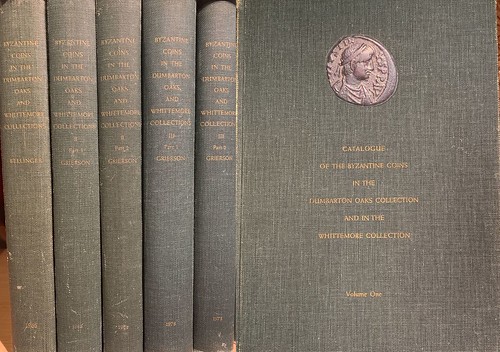
Catalogue of the Byzantine Coins in the Dumbarton Oaks Collection and in the Whittemore Collection. Washington D.C. 1966-1973. Volume 1. Anastasius I. to Maurice 491-602. XXVI, 383 S., 80 Tfn.; Volume 2. Phocas to Theodosius III 602-717. Part I. Pochas and Heraclius (602-641). 383 S., 22 Tfn.; Part II. Heraclius Constantine to Theodosius III (641-717). S. 385-728. Tfn. 23-46; Volume 3. Leo III. to Nicephorus III. 717-1081. Part I. Leo III. to Michael III. (717-867). IX, 470 S., 29 Tfn.; Part II. Basil I. to Nicephorus III. (867-1081). VIII, S. 471-887, Tfn. 30-70.
Lot 879: Revue Belge de Numismatique

Bände 1 - 20, 22 - 28, 30 - 60 aus den Jahren 1842 - 1904. Einheitlich gebunden in Ganzleinen, bestoßen, bei zwei Bänden Deckel lose, teilweise Rücken defekt.
To view the complete sale, see:
Literature Auction 41 - 11.05.2019 16:00
(https://solidus-numismatik.auex.de/Auktion/Onlinekatalog?intAuktionsId=716)
KRAUSE PUBLICATIONS PARTIAL LIBRARY SALE
George Cuhaj writes:
We at the Iola Historical Society are up and running with eBay auctions of the partial Krause Publications library books which were not retained by the present company when they left Iola for Stevens Point.
This week at least 7-15 items will be listed, with basic descriptions and photos. Questions should be handled thru the standard eBay question process.

The link below will take you to the seller listings. Happy bidding! -Editor
To view the Iola Historical Society's listings, see:
https://www.ebay.com/usr/iola_historical_society?_trksid=p2047675.l2559
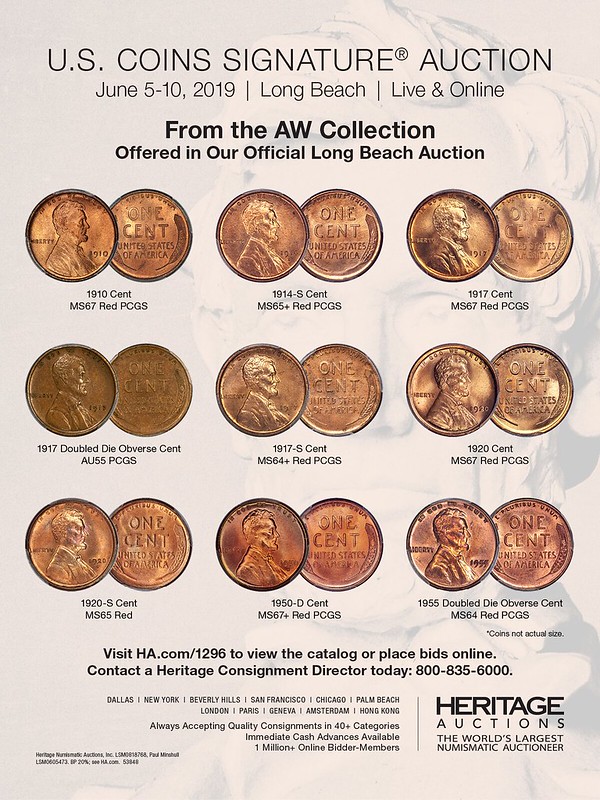
NEW BOOK: COINS OF THE REPUBLIC OF RAGUSA
A new book on the coins of the Croatian Republic of Ragusa has been published. I was alerted to it by an article by Ursula Kampmann of Coins Weekly. Here's some information I found about it on the web in English. -Editor
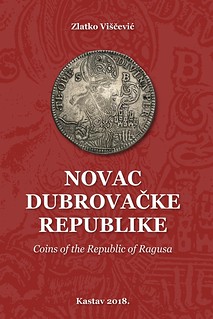 Coins of Ragusa are one of the most significant part of the Croatian numismatics and due to that fact they deserve to have an appropriate numismatic catalog. The job around this catalog commenced in 2011 and publication is planned for 2018.
Coins of Ragusa are one of the most significant part of the Croatian numismatics and due to that fact they deserve to have an appropriate numismatic catalog. The job around this catalog commenced in 2011 and publication is planned for 2018.
This catalog is a modern numismatic publication based primarily on the work of Milan Rešetar especially in classification part. However, this catalog brings a new approach to this matter and also new data about the coins of Ragusa.
The focus in this catalog is more on the catalog part than the historical background of the coins. Historical part is well presented in books of Milan Rešetar and Bože Mimica.
The main goal of this catalog is to enable easier identification of Ragusa coins and also to bring this matter to the newly interested numismatists.
Soft cover, 29 x 21 cm, 200 pages, grayscale images, Croatian and English texts.
Author: Zlatko Viščević
For more information, or to order, see:
Novac Dubrovacke Republike Coins of Ragusa
(http://www.monetalis.hr/index.php/component/content/article/36-izdavatvo/209-novac-dubrovacke-republike.html)
To read the CoinsWeekly article, see:
Specialized Catalog of Coins from the Republic of Ragusa
(https://coinsweekly.com/spezialkatalog-zur-muenzpraegung-der-republik-ragusa/)

NEW BOOK: BANGKA TOKENS
A. J. Lansen of the Netherlands wrote the Introduction to a new book by Puji Harsono of Indonesia on the tokens of Bangka. With his permission, here is the text along with ordering information for the book. Thank you. -Editor
 INTRODUCTION
INTRODUCTION
This catalogue describes the history of the Indonesian island of Bangka and the tokens used by the Chinese Kongsi groups.
As far as we know, this is the first time that all these tokens are catalogued, described and brought together.
In my opinion this catalogue is now becoming the standard reference for these interesting historic tokens.
This catalogue covers the entire period during which these tokens were issued and circulated under the reign of the Palembang Sultanate.
The author has made a review of the maps, photographs and sketches used as illustrations in the book.
He also gives information about the sources he used to describe the history of the island. A very interesting part of history over the period 1436 to 1848 is compiled by the author.
In a separate chapter is a complete description about the function and establishments of the Palembang Sultanate from 1662 until 1823.
The era of the English and Dutch government is also described. Another chapter describes the organisational structure of the various types of Kongsi groups, working on the island in the tin mining industry.
The history of the different mining techniques and the treatment process of tin is described.
There is also a short, but detailed description about the Chinese way of gambling by the Kongsi groups.
Of course a full description of the inscriptions and the metallic alloys of the tokens is given.
The author has also a made an interesting compilation, in the scientific literature of the known tokens mentioned by E. Netscher and Van der Chijs, H.C. Millies, Johan W. Stephanik, R.J. Veth and Michael Mitchener.
A pedigree analysis of the Sultans of Palembang, owners of the island, over the period 1662-1823 is recorded.
In the Catalogue, on 74 pages, the author has made a full, detailed, description of 439 tokens. A few tokens are drawings but the rest are excellent good photographs, both obverse and reverse. Translations of the inscriptions, weight, diameter and specific details are given.
Comprehensive information is given in a bibliography as a reference for the collectors, who wish to seek additional details.
Even though the book is written in Bhasa Indonesia the description of the tokens gives every collector of these items a comprehensive clear view.
Collectors: this is your book, so please send your suggestions and thoughts to the author, he appreciates your aid !
We sincerely appreciate the interest and help of everybody and trust that numismatists throughout the world will continue to write or mail giving the author suggestions and corrections that they may have.
Sincere congratulations to Mr. Puji Harsono for publishing this very interesting book about the history and tokens of Bangka.
A. J. Lansen IJsselstein the Netherlands
Member of the Royal Dutch Society of Coin and Medal Numismatics.
Member of the European Society of Coin and Medal Numismatics -Belgium.
Additional information on the book : Sejarah Dan Mata Uang Bangka
Author is Mr. Puji Harsono, CEO/Founder of the well known auction house in Indonesia : "Java Auction" in Bandung. Book impression: 207 pages , descriptions of 439 Bangka tin Tokens.
Format : 19 ½ x 26 cm. Softcover. Introduction/preface : English. Text: Bahasa Indonesia. Book references : 7 pages . All photographs, statistics, maps and tokens in full color. (as far as possible) ISBN 987-654-03-4321-9
Price : 24 Euro, postage excluded.
Order by E.mail : info@javaauction.com att. to. Mrs Nadia Laksitha; or by post: Mr. P. Harsono, Trunojoyo nr. 60 Bandung West Java 40115 Indonesia.
For Europe, also possible to order : E.mail : lansenkil@hotmail.com or a.j.lansen@hccnet.nl or by post: Mr. A. J. Lansen Haanderik 94 3401 ET IJsselstein the Netherlands. Payment possible by PayPal.

NEW BOOK: THE NUMISMATIST'S WIFE
It's non-numismatic, but collectors might enjoy it nonetheless - a new book titled The Numismatist's Wife. -Editor
 In Dahlia Japhet’s new historical fiction novel, "The Numismatist’s Wife" (published by Archway Publishing), a young Jewish woman must come to terms with her religion and how it affects her life and her family during World War I.
In Dahlia Japhet’s new historical fiction novel, "The Numismatist’s Wife" (published by Archway Publishing), a young Jewish woman must come to terms with her religion and how it affects her life and her family during World War I.
In Germany 1912, 17-year-old Ilse Ehrenkrantz longs for a path that is different from her middle-class traditional Jewish life. Fascinated by her artistic explorations of Christian symbols, Ilse immerses herself in a world outside her family. This decision propels her into a relationship with her cousin, Georg, a storyteller and passionate coin collector, who abandons Judaism for a Prussian military career. Ilse’s choices set in motion a series of consequences that divide her family for generations.
Rich with details of the era, the novel weaves together an exploration of deeply held religious views against a background of modernity to reveal the many intricacies facing Jewish Germans at the turn of the 20th century. Japhet hopes the "complexities facing Jewish Germans during that era resonate with readers."
The book is available for purchase at: https://www.amazon.com/Numismatist’s-Wife-Dahlia-Japhet/dp/1480858048 .
"The Numismatist’s Wife"
By Dahlia Japhet
Hardcover | 6 x 9 in | 194 pages | ISBN 9781480858022
Softcover | 6 x 9 in | 194 pages | ISBN 9781480858046
E-Book | 194 pages | ISBN 9781480858039
Available at Amazon and Barnes & Noble
About the Author
Dahlia Japhet was born in Israel and educated in Israel, the United States and Canada. She studied at the University of Michigan and Hebrew University of Jerusalem. She received her master’s degree in medieval studies at the University of Toronto and then studied at the Pontifical Institute of Mediaeval Studies, the Jewish Theological Seminary and at YIVO, New York City. Japhet taught for over 10 years, first at City University of New York and then at Bar Ilan University in Israel. She then became a banker. She also began studying German and German history. She currently lives in New York City with her two sheepdogs.
To read the complete article, see:
Young Jewish Woman Struggles with Spirituality and Desire in Shadow of World War I
(https://www.prweb.com/releases/young_jewish_woman_struggles
_with_spirituality_and_desire_in_shadow_of_world_war_i/
prweb16280587.htm)
BOOK REVIEW: THE EAGLE THAT WAS FORGOTTEN
Tim Janecke penned this review of Joel Orosz's 1988 book about the colonial-era collector Pierre Eugene Du Simitiere in the the Spring 2019 issue of The C4 Newsletter, published by the Colonial Coin Collectors Club (C4). We're republishing it here with permission. Thanks to C4 President Jack Howes for assistance.
Members of specialty groups like C4 are serious students of numismatics, and their interest in numismatic literature and research parallels that of E-Sylum readers and our sponsor, the Numismatic Bibliomania Society. Last week we republished Jack's own article about non-numismatic books about the U.S. colonial era. -Editor
THE EAGLE THAT WAS FORGOTTEN
By Dr. Joel J. Orosz
(Tim Janecke)
 Details:
Details:
- Published by Bowers and Merena Galleries. Inc.
- Copyright 1988
- Fifty-five pages plus footnotes and an index
- Line drawings and some photographs included
The book’s title, The Eagle That Was Forgotten, stems from a poem by that same title written by Vachal Lindsay. Understanding that poem is essential to understanding Dr. Joel J. Orosz's book. The poem pays tribute to a noble bird that has lived its life and now lies quietly below a stone, its victories forgotten. Orosz's book explains how Pierre Eugene Du Simitiere (1737-1784) achieved significant accomplishments in American numismatics during America’s colonial, revolutionary and early independent days without gaining financial wealth or public acknowledgement. Dr. Orosz helps explain some of the wonderful accomplishments of Du Simitiere, things left unknown by most numismatists and scholars of today.
Du Simitiere was an artist who emigrated from Switzerland to the Caribbean region and then on to colonial America while in his twenties. He paid attention to monetary systems and coins found in each region, beginning to collect some coins at that time. From his story it is clear that there were coin collectors in Philadelphia, New York and New Jersey in the 1760s. There was also the sale of an American coin collection by a private party during this era.
Living in Philadelphia, Du Simitiere had a small but important collection of coins and artifacts which he compiled into a museum. He had New England coins, British coins, ancient coins, Roman medals, gold coins, plus stories of his own experiences to offer. Admission was fifty cents and the tour lasted around one hour.
Interestingly, Du Simitiere remained neutral during the American Revolution. He did correspond with John Adams, Thomas Jefferson and George Washington about coins and currency, yet when the Tories occupied Philadelphia, he knew and conversed with them as well. He worked on a medal of George Washington, having made a portrait of him during a sitting, and he suggested using a woman as the subject of Liberty for the Seal of the United States.
Du Simitiere died a poor person. His museum was still in place in Philadelphia, but his income was low. He had been giving drawing classes, yet remained poor. I am pleased to have read that he could not sell his coin collection. He held it too dear to himself. He was an avid collector and I suspect a wonderful person in many ways.
I appreciate a great deal that Dr. Orosz wrote this book. I met him at The World’s Fair of Money in Philadelphia this past summer. He signed my copy of The Secret History of the First U.S. Mint, as did the coauthor, Leonard Augsburger. Dr. Orosz is a tireless researcher who supports his claims well. He has written several other books on subjects including coin investing, effective foundation management and studies regarding museum activities. He is a frequent contributor to numismatics periodicals, too, including The Numismatist and Coin World.
I encourage anyone interested in early American numismatics to give this book a read. What I found out was that there was a good deal of private numismatic activity in this country prior to the nineteenth century.
For more information about the Colonial Coins Collectors Club (C4), see:
http://colonialcoins.org/
Joel's book was my own introduction to the life of this groundbreaking yet largely forgotten numismatic pioneer, and should be required reading for anyone interested in the development of the hobby in the U.S. Together with American Numismatics Before the Civil War by Q. David Bowers, The Eagle That Was Forgotten is a foundational work for researchers and collectors alike. -Editor
To read the earlier E-Sylum article, see:
BOOK REVIEWS: U.S. COLONIAL ERA
(https://www.coinbooks.org/v22/esylum_v22n17a05.html)
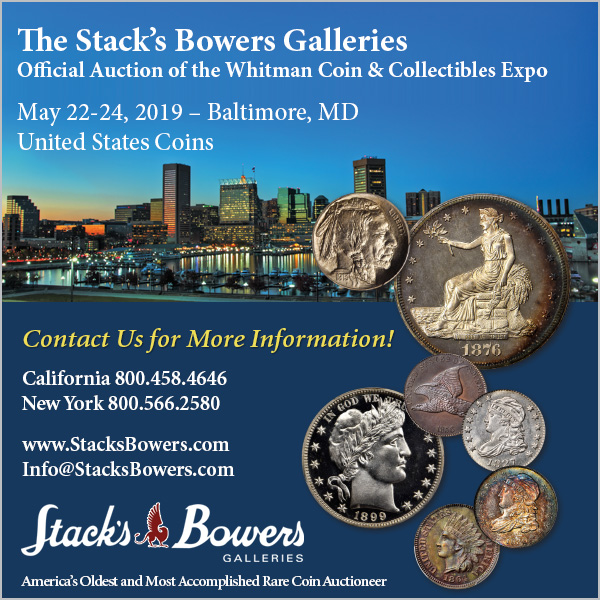
RARE NEW ORLEANS MINT MONOGRAPH SOUGHT
Robert C Whitehead writes:
About a decade or so back there was a book by Charles J Collins titled "A History of the United States Mint, New Orleans, Louisiana" Any idea where one might find a copy?
When I received this inquiry I was fairly confident I'd find a copy of this item in my library; I've got a full shelf of book on U.S. Mint histories. Alas, this one was not there. To jog my own memory I took a look in the E-Sylum archives, and found these remarks from readers beginning in 2003. -Editor
Dave Ginsburg writes:
Is anyone familiar with the book, "A History of the United States Mint, New Orleans, Louisiana" by Charles J. Collins, Jr. (Baton Rouge: LSU Printing Office, 1970.)? I first saw a reference to it in the bibliography of a Louisiana State Museum publication, but haven't so far found a bookseller or numismatist who has a copy or has even heard of it. I asked my local library to try getting it through inter- library loan, but the only copy they could find is in the reference collection of the New Orleans Public Library (which they won't lend out.) I think there may also be a copy in the LSU library.
I'd appreciate news of a copy for sale, or information about the author, or if a fellow E-sylum subscriber who lives in New Orleans would go to the library and tell me something about the book! Thanks! If you have any news, please contact me at ginsburg.d at worldnet.att.net ."
As editor, I added the following: "[I assume LSU means Louisiana State University. This is why I love bibliographies and footnotes - you never know what interesting new source might turn up. I thought I had seen every U.S. Mint history published, but I don't believe I've come across this before. If anyone learns more about it, please keep E-Sylum readers in the loop. -Editor]"
To read the earlier E-Sylum article, see:
COLLINS NEW ORLEANS MINT HISTORY
(https://www.coinbooks.org/esylum_v06n26a03.html)
"I'm pleased to be able to say that I've received a copy of "A History of the United States Mint, New Orleans, Louisiana" by Charles J. Collins Jr. that I asked about a few weeks ago.
Shortly after my inquiry, I received a response from an E-Sylum subscriber who owns a copy (stored offsite, unfortunately for me). However, he thoughtfully referred me to an acquaintance of his who, very kindly, sent me a photocopy."
To read the earlier E-Sylum article, see:
NEW ORLEANS BOOK LOCATED
(https://www.coinbooks.org/esylum_v06n32a06.html)
"As to the Charles J. Collins, Jr. book entitled "The History of the United States Mint in New Orleans" discussed in your recent comments, there is also a very rare pamphlet on the general subject published in 1845 by Riddell entitled "The New Orleans Mint and the Process of Coinage, " of which I have located only one other copy. The text of the pamphlet was reprinted in the April 1968 issue of The Numismatist."
To read the earlier E-Sylum article, see:
RARE NEW ORLEANS MINT PAMPHLET
(https://www.coinbooks.org/esylum_v08n27a19.html)
Dave and Eric have both passed from the scene, and it was wonderful to read their comments again. So we know the Collins work is rare and seldom seen.
Nowadays of course, we have the Newman Numismatic Portal, and that was my next stop. The book is listed, but since it was published in 1971 and is still in copyright, a full view is not available. Len Augsburger of NNP notes: "the title page says 1970 but the foreword is dated 1971." It's a 158 page card-covered monograph. Here's the book description. -Editor
A History of the United States Mint, New Orleans, Louisiana
 The first substantial study of New Orleans Mint history, drawn from original documents in the National Archives and other sources. Printed by Louisiana State University. 38 plates, with architectural drawings of the Mint and other illustrations.
The first substantial study of New Orleans Mint history, drawn from original documents in the National Archives and other sources. Printed by Louisiana State University. 38 plates, with architectural drawings of the Mint and other illustrations.
This is an in-copyright publication. "Snippet" results from the book will appear in the Newman Portal search results.
To view the NNP entry, see:
https://nnp.wustl.edu/library/booksbyauthor/526169
So, can anyone help? Are copies available for sale or interlibrary loan? I'd look forward to reading this myself. -Editor

J. A. BOLEN DIE REGISTER ON NEWMAN PORTAL
The latest addition to the Newman Numismatic Portal is the J. A. Bolen Die Register. Project Coordinator Len Augsburger provided the following report. Thanks. -Editor
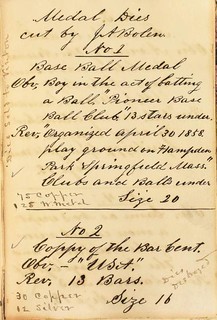 John Adams Bolen (1826-1906), diesinker of Springfield, MA, issued a number of medals in the 19th century variously related to numismatic, civic, commercial, and patriotic subjects. His work has been thoroughly and capably cataloged in Neil Musante’s The Medallic Works of John Adams Bolen (2002). Bolen’s oeuvre was exceptionally documented for the era, and the 1866 manuscript of his die register is now available on Newman Portal. Scanned from the American Numismatic Society (ANS) Rare Book Room, this document (mostly in Bolen’s hand) was donated by Tony Terranova to the ANS in 1995 and prior to that appeared in the Armand Champa library sale (part 2, Bowers & Merena 3/1995, lot 1074).
John Adams Bolen (1826-1906), diesinker of Springfield, MA, issued a number of medals in the 19th century variously related to numismatic, civic, commercial, and patriotic subjects. His work has been thoroughly and capably cataloged in Neil Musante’s The Medallic Works of John Adams Bolen (2002). Bolen’s oeuvre was exceptionally documented for the era, and the 1866 manuscript of his die register is now available on Newman Portal. Scanned from the American Numismatic Society (ANS) Rare Book Room, this document (mostly in Bolen’s hand) was donated by Tony Terranova to the ANS in 1995 and prior to that appeared in the Armand Champa library sale (part 2, Bowers & Merena 3/1995, lot 1074).
The Bolen manuscript was published in the American Journal of Numismatics (August 1866) and has been well-known since, but the images of Bolen’s own handwriting, as presented here, convey a historicity and sentiment not necessarily acquired from the heretofore published version. Apart from Musante’s comprehensive treatment of the subject, the Stack’s March 2011 Americana auction sale catalog, presenting the Q. David Bowers collection of Bolen medals, is an essential reference for the Bolen collector.
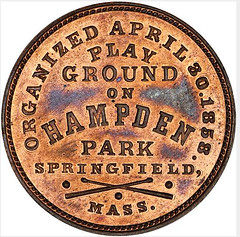

Images:
First leaf in the Bolen die register, describing dies for a "Base Ball Medal."
Bolen "Base Ball" medal, copper, JAB-1, ex. Q. David Bowers, Stack’s 1/2011, lot 6587 (realized $1,610).
Link to Medal Dies Cut by J. A. Bolen:
https://archive.org/details/medaldiescutbyja00bole
Link to Q. David Bowers collection of Bolen medals (Stack’s, January 2011):
https://nnp.wustl.edu/library/auctionlots?AucCoId=3&AuctionId=517032&page=281
VIDEO: CSNS CONVENTION 2019
These are selections from the David Lisot Video Library that feature news and personalities from the world of coin collecting. David has been attending coin conventions since 1972 and began videotaping in 1985. In 2017 the Newman Numismatic Portal reached an agreement to list all David’s videos on their website. Each week an excerpt of a different video is available on the CoinTelevision YouTube channel.
Here's one on the recently-concluded CSNS 2019 Coin Convention. -Editor
CSNS 2019 Coin Convention in Schaumburg Continues to Draw Collectors and Dealers. VIDEO: 8:11.
Kevin Foley, Bourse Chairman, Central States Numismatic Society, David Lisot, Interviewer, CoinTelevision.com. Kevin Foley talks about the 80th annual Central States Numismatic Association Society Convention held in Schaumburg, Illinois just outside Chicago. He talks about the convention, the Heritage auction, clubs, lecture presentations and why this convention keeps coming back to Schaumburg.
This was the 80th annual convention for the Central States Numismatic Society. David Lisot brings highlights of the show with interviews including Kevin Foley and why CSNS 2019 Coin Convention in Schaumburg Continues to Draw Collectors and Dealers, Thomas Uram Announces Plans to Run for American Numismatic Association Vice-President, Chris Bulfinch New Numismatic Reporter for Coin World, a Father-Son Team Shares Passion for Coin Collecting, CSNS19-005
The entire video is available on the Newman Numismatic Portal at:
https://nnp.wustl.edu/library/multimediadetail/522852
An excerpt of the video is available for viewing on the Coin Television YouTube Channel at:
https://youtu.be/vgRUhHJfk5w
CSNS Coin Convention Highlights 2019
Mitch Ernst, President, Central States Numismatic Society, David Lisot, Interviewer, CoinTelevision.com.
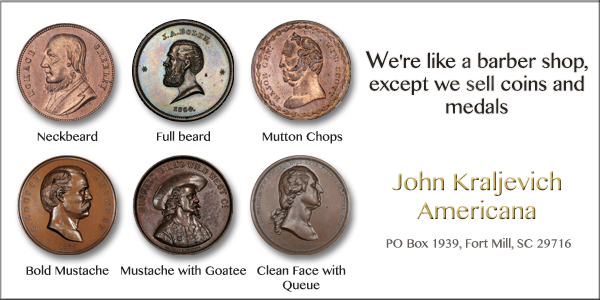
NOTES FROM E-SYLUM READERS: MAY 5, 2019
Russian Mother's Medal
 Inspired by the Mother;s Medal pictured last week,
Etienne Le Pen writes:
Inspired by the Mother;s Medal pictured last week,
Etienne Le Pen writes:
Here is a picture of a Russian Mother's medal, based on the # of kids she had.
Don't forget Mom on Mother's Day! -Editor
To read the earlier E-Sylum article, see:
NUMISMATIC NUGGETS: APRIL 28, 2019 : Mother's Medal
(https://www.coinbooks.org/v22/esylum_v22n17a21.html)
Lindbergh's Chinese Medal Likely Unique
Frank Draskovic writes:
 Regarding Harry Waterson's inquiry about Lindbergh's Chinese medal, I've checked all sources of information on pre-1949 Chinese orders & medals known to me, including the Harry Mohler Collection of Chinese medals at Stanford University's Hoover Institution. In this vast collection of over 900+ items, there was not a hint of anything like the Lindbergh medal.
Regarding Harry Waterson's inquiry about Lindbergh's Chinese medal, I've checked all sources of information on pre-1949 Chinese orders & medals known to me, including the Harry Mohler Collection of Chinese medals at Stanford University's Hoover Institution. In this vast collection of over 900+ items, there was not a hint of anything like the Lindbergh medal.
I'd take with a grain of salt the reportage in the interesting Nanking, Sept. 25 (1931) news clipping that Harry found, about the Chinese Nationalist Gov't. having created a new aviation award with Lindbergh as the first recipient. Though it may have been gazetted, it's far more likely that Chiang, needing something special to award Lindbergh in recognition of his flood relief efforts, had this aviation medal "established" just for him, an item that almost assuredly is a one-off piece never awarded to anyone else.
Makes sense. Thanks. -Editor
To read the earlier E-Sylum article, see:
LINDBERGH'S AVIATION MEDALS
(https://www.coinbooks.org/v22/esylum_v22n15a15.html)
1815 Token Identification Sought


David Powell of Northwest London writes:
Can anyone can tell us anything about this item's usage or origins? It was shown to me by a dealer correspondent who supplied the following provenance information:
• "Copper. 29mm. It came from a small accumulation, I think probably of an 1890s Plymouth sailor, which contained various Devon Pub Checks and several Danish West Indies St Thomas tokens of that decade."
Superficially, it looks as if it ought to be one of the anonymous colonial pieces discussed in the Withers' "British Copper Tokens. 1811-1820", but there is no sign of it either there or in any of several other books on the British and Canadian tokens of the period.
I have already asked several very knowledgeable numismatists over here {various places in England & Wales, including Paul and Bente Withers}, and all they could come up with in terms of literary references were two or three from the mid-19th century, none of which did more than just describe the piece. There was nothing to enlighten us on usage or origin. For example:
• Illyrisches Blatt no. 31, 1st August 1844, Leibach (Ljubljana) Slovenia, published by Ignaz Alois Edler v. Kleinmayr. In a chapter entitled Verzeichniss der eingegangenen Museal-Geschenke: the token is described, with the legend quoted, among British tokens given to the museum, but no other details about its use or origin are given.
• Neumann vol 4 (1863), page 256, no.25692
The British Museum apparently acquired a specimen in 1870 and have it tentatively attributed to Ireland, but that sounds rather dubious.
Our best conjecture to date is that it is probably a factory or truck shop token, but that also is still far from certain.
Such a plain piece, with little to go on. Can anyone help? -Editor
Maundy Money Exhibit
I learned that Tom Uram's exhibit on Maundy Money placed first in its class and won Best in Show at the recent Central States show. Congratulations! We were just discussing Maundy coinage in the last couple E-Sylum issues. -Editor
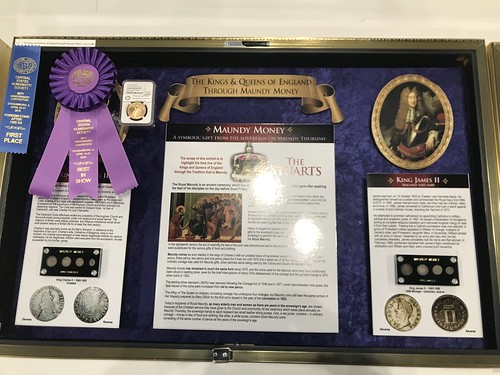
To read the earlier E-Sylum article, see:
MAUNDY MONEY MUSINGS
(https://www.coinbooks.org/v22/esylum_v22n17a14.html)
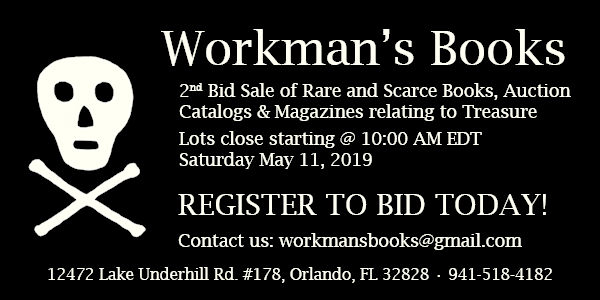
C H WHITE FRANKLIN INSTITUTE MEDAL SOUGHT


1874 Franklin Institute Silver Medal
Anthony A. P. Stuempfig of Philadelphia, PA writes:
I am trying to locate a silver Franklin Institute medal awarded Charles H White, a Philadelphia cabinetmaker (active 1818-1876) in 1825. I have been doing research on him since 1973 when I first discovered his work. He was one of Philadelphia’s most prominent cabinetmakers of the second and third quarters of the nineteenth century.
For decades I have been attempting to locate any of the four silver Franklin Institute medals he won in 1825, 1826, 1842 and 1843 through genealogical and much other research. I recently found this reference to one of his medals.
I have been in contact with Joe Levine who noted records going back that far had been discarded, so finding the buyer of this medal through him could not be accomplished. Len Augsburger at the Newman Numismatic Portal suggested I contact you and hopefully, through your publication, the vast readership and contacts of The E-Sylum.
I would be very grateful if you would put a query in The E-Sylum with the hope that one of your readers might have this medal or know of its location, or, information on any illustrations of the medal in PCAC no 45 (12/3/1988, lot 282, or, photographs of the reverse of this medal with the inscription published elsewhere.
My research is coming to a close and I plan to publish in the next year. I would be very grateful if you could help me in this endeavor. I thank you in advance for your consideration.
Can anyone help? Has this medal (or any of its brethren) been spotted anywhere? For reference, I added an image of an 1874 example of the silver medal from the Heritage site. -Editor
Anthony adds:
 Since I wrote to you, I discovered that the 1842 silver Franklin Institute medal awarded to CH & JF White was sold in a May 2019 sale. I am attempting to locate the buyer, who might be a dealer, via the auction house - that claimed to have contacted him/her on my behalf - but have had no response.
Since I wrote to you, I discovered that the 1842 silver Franklin Institute medal awarded to CH & JF White was sold in a May 2019 sale. I am attempting to locate the buyer, who might be a dealer, via the auction house - that claimed to have contacted him/her on my behalf - but have had no response.
Isn’t it strange, after looking for any of these medals for more than 50 years, that I find an old reference to the 1825 medal and the 1842 medal is sold at auction, both within a months’ time… The photo (below) is the reverse of the 1842 medal. Whether it had the original presentation box or if there was any family provenance was not noted. Whether I will ever see it in the flesh or get a chance to buy it from the purchaser will be very interesting (and I hope not disappointing).

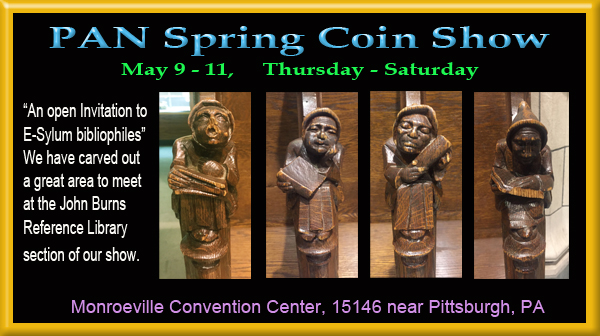
POLK CAMEO BY SALATHIEL ELLIS
Back in 2009, Dick Johnson wrote:
I just finished an article on Salathiel Ellis, the cameo engraver who modeled four presidents (Fillmore, Pierce, Buchanan and Lincoln) for the Indian Peace Medal Series and two medals for the Military Series (Scott and Taylor) among others. These were all struck at the Philadelphia Mint.
Does anyone have an illustration -- or the actual item -- of any cameo portraits he prepared over his career in the 1840s to 1860s? Georgia Chamberlain illustrated two of these in plaster and a separate illustration of Gilbert Stuart in her book, American Medals and Medallists. Are there any others?
I recently came across this image of a cameo of President Polk by Ellis, and thought it might be worth sharing.
Cameos were a favorite form of jewelry. This example features a cameo portrait of President Polk made by Salathiel Ellis in 1847. The gold chased mounting is by Alexander & Counts.
Thank you! Great piece of artwork. I've forwarded this to Dick Johnson. -Editor
To read the complete article (scroll down to see the cameo), see:
Fashion and Frugality
first lady sarah polk
(https://www.whitehousehistory.org/fashion-and-frugality)
To read the earlier E-Sylum article, see:
QUERY: SALATHIEL ELLIS PORTRAITS, CAMEOS SOUGHT
(https://www.coinbooks.org/esylum_v12n19a13.html)

VOCABULARY TERM: COIN
Dick Johnson submitted this entry from his Encyclopedia of Coin and Medal Terminology. Thanks. What could be more foundational - what does it mean to be a coin? -Editor
Coin. (1) An object created to pass for money – originally cast but later struck – with a design and inscription indicating authority and denomination. Coins are most often called by their denomination or their type; occasionally their name is a combination of both. With the continued use by many people, coins are often given nicknames or slang terms. An example: Lincoln head is a type of United States cent (denomination); it is often, but incorrectly called a penny (a slang term).
Because a coin's function is to circulate, it becomes worn or abraded (see abrasion). Thus coins appear in a wide range of abradedness (which numismatists call condition and the act of determining condition is called grading). A somewhat imprecise terminology exists to described various conditions. While condition affects the object's collector value, it does not lessen the function of a coin to circulate.
Coins are removed from circulation more so as souvenirs or collectible objects rather than their becoming unfit to circulate – worn so smooth they are not identifiable – (or, in extremely rare instances, being demonetized). Thus nations which issue coins are required to constantly replenish the stock of coins in circulation. Even so, coins far outlast paper money in their function as a medium of exchange.
Prior to the 20th century coins bore an intrinsic value close to their bullion value. Since 1920, when Great Britain went off the sterling standard, coins have taken on more of a token value in comparison to their face value. Following that, many coin-issuing countries have sought cheaper metal compositions in which to strike their circulating coins yet retain many of the beneficial factors of typical coinage metals (bronze, silver, gold).
The major article coins and coining in this book explores the history and technology of coins and coin making. Numerous articles herein cover the design of coins and the terms used in their describing and cataloging. The article on coin collecting covers the collecting aspect.
Coin Characteristics
1) Value (Denomination).
2) Authority (Authentic).
3) Image (National symbols).
4) Nationality (Jurisdiction).
5) Design (Devices).
6) Lettering (Inscriptions).
7) Familarity (Recognition).
8) Hardness (Permanence).
9) Bilateral (Two-sidedness).
10) Longevity (Long lasting).
Looking for the meaning of a numismatic word, or the description of a term? Try the Newman Numismatic Portal's Numismatic Dictionary at: https://nnp.wustl.edu/library/dictionary
Or if you would like a printed copy of the complete Encyclopedia, it is available. There are 1,854 terms, on 678 pages, in The Encyclopedia of Coin and Medal Technology. Even running two a week would require more than 19 years to publish them all. If you would like an advance draft of this vital reference work it may be obtained from the author for your check of $50 sent postpaid. Dick Johnson, 139 Thompson Drive, Torrington, CT 06790.

EDOUARD DANIEL JACOB GROUX (1807-1874)
 Edouard Daniel Jacob Groux (1807-1874) AKA Daniel E. Groux, "the fond old dreamer," was born in France. In 1814, his father was an officer in the household of the Emperor at Hamburg, Germany. In 1819, Groux had studied and mastered Latin and Greek. Due to a reversal in his father's career he joined him as a cook and pastry chef for the Russian Ambassador, Count Suchtelen, at the Embassy in Stockholm, Sweden. The Count bequeathed Groux his coin collection.
Edouard Daniel Jacob Groux (1807-1874) AKA Daniel E. Groux, "the fond old dreamer," was born in France. In 1814, his father was an officer in the household of the Emperor at Hamburg, Germany. In 1819, Groux had studied and mastered Latin and Greek. Due to a reversal in his father's career he joined him as a cook and pastry chef for the Russian Ambassador, Count Suchtelen, at the Embassy in Stockholm, Sweden. The Count bequeathed Groux his coin collection.
His first marriage was on August 28, 1825, to Pauline Josephine Adele Des Champs, at Westminster, England. They had a daughter Desiree C. Groux.
In 1839, Groux acquired a second coin collection of 2,800 pieces collected over a period of 40 years by Dr. Lemner, Librarian of the Ambrosian Museum, Innsbruck. Groux bought the collection from Lemner's son who inherited it.
In 1841, at Marseilles, Group had amassed a collection of over 8,000 coins and medals. The American Consul ill advised him to sell the collection to the American government.
In 1844, Groux arrived in America settling at Boston, Massachusetts. French pastry chef, numismatist, adventurer, and pretensive opportunist who moved to Boston, and later on to Washington, D.C. Fluent in four languages he translated several works into English and offered his services as a language instructor.
The 1845 and 1846 correspondence of D.E. Groux, a noted collector of the time, offered his "valuable cabinet of coins and medals", numbering 8,272 pieces, for sale "at a low price" to the Institute. Unfortunately, the Institute, as well as its successor, the Smithsonian Institute, did not have the necessary funds to take advantage of this favorable offer.
In August 1846, Groux pawned his coin collection in New York. He asked Charles Francis Adams of Boston for a loan to redeem his collection. Adams made seven loans from September 1846 to June 1847 totaling $233. Adams kept hundreds of coins as collateral on the loan. He discovered over time many of these coins were scarce and rare and unavailable in America.
Allen C. Cooper, a Boston attorney loaned Groux $155 using a wooden box filled with 1,620 silver coins, and an additional 2,626 in copper and brass.
Beginning in 1848 he held a number of coin auctions that realized very little money.
His second marriage was to Mary (1833-) at Massachusetts.
He is listed in the 1849 Boston City Directory as a teacher of German and French residing at 2-1/2 Green Street.
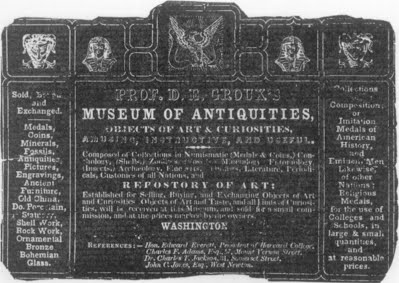
Daniel E. Groux's business card or trading label.
In 1850, he moved to Washington, D.C.
In 1851, Groux persuaded Rep. John L. Conger of Michigan to introduce a bill into the House a petition by Daniel E. Groux asking Congress to buy his coin collection of 6,537 pieces for the Library of Congress.
In 1851, Groux catalogued the coin collection of General Nathan Towson : The Towson Cabinet of Medals and Coins, which the following year was donated to the Maryland Historical Society.
Author of Numismatic History of the United States (unpublished planned as 3 volumes, and believed to be incomplete), whose collection sold by lottery on February 15, 1856 sale by Bangs.
He issued a 16-page catalog of coins for sale on December 1, 1855, not cited by Attinelli as a real coin auction catalogue, but as a catalogue of coins.
In 1856, Groux sued Charles Francis Adams for fraud by failing to return the coin collection when payment in full was made on the loan. Groux asserted the collection was worth $10,000. The trial of Groux v. Adams reads like a romantic fiction enthralling numismatic readers with amazing entertainment. The defense attorney brought in Boston coin dealer Henry Davenport as an expert witness testifying on the value of the collection. Davenport showed in specific examples of coins how over evaluated Groux assessed his own collection. Davenport stated, for example, he possessed a Cromwell crown superior in every way paying 2 pounds 5 shillings when in London recently. The inferior specimen owned by Groux was valued at $400, the same coin previously valued by Groux in 1851 for $50. Groux lost and was found guilty of perjury. Adams sold the collection to Winslow Lewis.
Groux hoped to become employed by the Director of the Smithsonian, Joseph Henry. Unfortunately, Henry was informed about the Boston lawsuit with Adams and did not hire him.
Dejected and unable to find employment he went to Philadelphia. There was arrested and released.
On December 30, 1868, Charles Francis Adams, wrote in his diary on returning to his coin collection after many years he was amazed at how many rare and valuable coins he amassed and could not recall where he got them.
Groux died heavily in debt and his estate only brought $1,452.00 in an auction in 1874.
To read the complete article, see:
GROUX, EDOUARD DANIEL JACOB
(https://sites.google.com/a/numismaticmall.com/www/numismaticmall-com/groux-edouard-daniel-jacob)
The entire inventory of the Lupia Numismatic Library is for sale. Individual items will be available before the remaining archives are broken up into parcels sold at philatelic auctions in the U. S. and Hong Kong. Check NumismaticMall.com frequently as dozens of new items with estimates will be posted daily until everything is sold.
All inquiries will be given prompt and courteous attention. Write to: john@numismaticmall.com .

HARVEY STACK'S NUMISMATIC FAMILY, PART 43
Harvey Stack's blog series focuses on living in a numismatic family. Here is part 43. Thanks, Harvey. -Editor
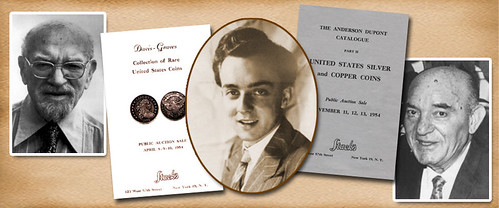
My story from last week ended with our finally receiving an explanation of the formula that the government was using to determine what gold coins were worthy of getting a license to import. With this explanation we became confident that we could win our case claiming that their actions were arbitrary and capricious. According to our attorney, "laws can be made and enforced if they are fair and without prejudice" when an action was taken.
While the source being used in the government's formula, Gold Coins of the World, was a wonderful reference to learn about coins, it only provided basic information as to what designs were struck and what denominations were issued. It did not consider rare dates within series or the quality of coins. Those who were ruling on what could or could not be licensed for import did not possess knowledge beyond this book and did not have access to the sources that a numismatist would use when assembling a collection.
Let me give you an example, using just one denomination: $20 double eagles.
Gold in the 1960s was pegged at $35/ounce and traded in that range worldwide. The gold content for the Saint-Gaudens $20 gold, issued from 1908 to 1933, was slightly less than one ounce, but to make this explanation easier, I will call it a full ounce of pure gold.
Regardless of date or grade, as precious metal a double eagle was worth $35. If you considered all the dates and mints that struck these coins as one category, the Friedberg book gave the design a value, in average condition of $75. As this did not meet the 4x factor, common $20 double eagles would not be considered worthy of receiving an import license. But, if among the dates were rarities such as 1921, 1925-S, 1926-S, 1926-D, 1927-S, 1927-D, 1929, 1931 or 1932 (all rare and unusual issues, even back in the 1960s), they would all have been treated as common, and considered too low in value to receive an import license. The Custom House, Treasury Department or the Mint considered each and every one of these rare coins as if they were of the common grade, for they were listed in Gold Coins of the World book at the low price of $75.
Our case against the Office of Gold and Silver Operations (OSGO) was not claiming that the agents were unable to distinguish a genuine double eagle (or other gold coin) from a counterfeit – the reason the import restrictions were originally instituted. Our claim was that they were not able to determine from the sources they were using what was rare and collectible. By using this argument and citing one coin after another, we were able to demonstrate that the officials were arbitrary and capricious in executing the export licenses. Ironically (although we did not bring this up in the suit as it might make importing even harder), by limiting the import licenses, the government was creating a false rarity for common date coins, as they became scarcer in the United States. This in effect increased the prices for these coins, raising their values over the 4x criteria that the import licenses were based on.
The government, once shown that they were creating an unwarranted hardship, asked for and received a stay of opinion, so they could study what they had learned. The Judge extended them that privilege. Sometime in November 1966, we were advised by the Hearing Judge, that we had provided the proper information to the Treasury, and that they should proceed to review our explanation and testimony and permit the licensing we were requesting. We had won our case and waited for the licenses to be issued.
However, later in that same month, our attorney was advised that the government had reviewed the Hearing Judge's decision, but then stated: "We received and re-examined the ruling set forth by the Hearing Judge, but not adhering to his ruling, we hereby still deny the license requested."
Our attorney was shocked, but noted that he had previously witnessed situations where government agencies did not follow a ruling set forth. The remedy was for us to take the matter to a higher court and start over again. After the Stack family discussed it, we decided that we had been taken advantage of and requested that our attorney file an appeal and take our case to a higher court. It was apparent to us that we were not going to be able to resolve the case in 1966, but we were determined to press on.?
While it veers from numismatics itself into the realm of law and economics, Harvey's story of the legal battle over coin importation is a fascinating look into key issues of the day shaping the numismatic hobby. What an ordeal! -Editor
To read the complete article, see:
Harvey Stack Remembers: Growing Up in a Numismatic Family, Part 43
(https://www.stacksbowers.com/News/Pages/Blogs.aspx?ArticleID=3361)
To read the earlier E-Sylum article, see:
HARVEY STACK'S NUMISMATIC FAMILY, PART 42
(https://www.coinbooks.org/v22/esylum_v22n16a20.html)

CHICAGO HALL OF FAME INDUCTS M. VERNON SHELDON
The Chicago Coin Club has announced the fifth inductee into its Hall of Fame. -Editor
The Chicago Coin Club announces that the fifth person to be inducted into its Hall of Fame is former ANA President and exhibit case manufacturer M. (Merrill) Vernon Sheldon. His Hall of Fame citation has been published on the club’s Hall of Fame web page, www.chicagocoinclub.org/projects/hof.
Twelve Hall of Fame inductees have been selected. Each of the remaining seven will be announced at the rate of one per month, June through December, during the Chicago Coin Club’s centennial year, 2019.
The Chicago Coin Club was organized in 1912 as American Numismatic Association Branch No. 1, and reorganized under its present name in 1919. All are invited to join. To become a member you must attend a meeting and submit an application along with a membership fee of $20 ($10 for Junior membership). A first reading of your application will be held at this meeting, and a second reading at the next monthly meeting, following publication of your name in the club newsletter. (You are not required to be present for the second reading.) Upon membership approval, you will become a member.
The Chicago Coin Club holds monthly meetings in downtown Chicago, plus at major numismatic conventions such as Central States, with a speaker featured at every meeting except the annual auction, held at the November meeting.
Here is the text of the M. Vernon Sheldon entry. -Editor
 M. (Merrill) Vernon Sheldon joined the Chicago Coin Club August 1, 1928 as member No. 166. He was Secretary 1937-38, but his most lasting service to the Club was securing life membership in the ANA for it; in 1941 he generously offered it with his compliments. He was awarded the Club’s Medal of Merit in 1956. In 1985 the Chicago Coin Club held its 800th meeting, and as part of the celebration published a book, Perspectives in Numismatics, which is dedicated to his memory.
M. (Merrill) Vernon Sheldon joined the Chicago Coin Club August 1, 1928 as member No. 166. He was Secretary 1937-38, but his most lasting service to the Club was securing life membership in the ANA for it; in 1941 he generously offered it with his compliments. He was awarded the Club’s Medal of Merit in 1956. In 1985 the Chicago Coin Club held its 800th meeting, and as part of the celebration published a book, Perspectives in Numismatics, which is dedicated to his memory.
Mr. Sheldon (October 20, 1901 – April 10, 1982) studied engineering at the Universities of Michigan and Utah. He briefly worked at a Utah copper mine, then moved to Chicago in 1924 where he joined Teletype Corporation, continuing his education at the University of Chicago and the Armour Institute. In 1944 he opened the Gagefix Manufacturing Company, producing vital equipment for the armed services, which operated until 1953. He began collecting coins about the time he moved to Chicago, initially specializing in U.S. and ancient Greek and Roman coins. Later, his collection of United States currency included many plate notes in Friedberg’s Paper Money of the United States, particularly a group of the "coin notes" of 1890.
In 1938 Mr. Sheldon was elected general secretary of the ANA, serving with fellow Chicago Coin Club member J. Henry Ripstra (Hall of Fame No. 1), ANA President. Elected to the ANA Board of Governors in 1944, he served as First Vice President 1947-49 and as President August 24, 1949 to August 28, 1951. He was added to the committee responsible for the fifty-year index to The Numismatist in 1938, which relied upon his personal card index to the first forty-one volumes. He was instrumental in setting up the ANA’s slide program in 1949, allowing local club members to view sharp images of coins and currency. In 1955 he was appointed Chairman of the Exhibit Case Committee, set up to manufacture and sell a quantity of ANA standard steel exhibit cases by subscription; the project was a success. He continued to advertise these cases on his own acccount in The Numismatist as late as 1963, and they were used at ANA conventions until replaced by the somewhat larger Allstate aluminum cases many years later.
Mr. Sheldon was the recipient of ANA’s 1949 Medal of Merit and in 1951 received its highest honor by being named the first recipient of the Farran Zerbe Award. In 1983 the ANA initiated an annual award in his memory for the best audio/visual program; five years later, he was inducted into its Numismatic Hall of Fame. In his obituary notice in the Chicago Coin Club Chatter, May 1982, Secretary-Treasurer Carl F. Wolf wrote, "His dedication and the generous sharing of his time and talents will forever remain a standard for the membership to follow."
Through his service on the ANA Board of Governors, Mr. Sheldon met Marcella L. Beck, secretary to fellow Governor V. Leon Belt; they married in 1946 after the Davenport convention. She actively supported his numismatic work, and received the ANA Medal of Merit herself in 1952.
To read the complete article, see:
Hall of Fame
– Chicago Coin Club –
Member 5
M. Vernon Sheldon
(http://www.chicagocoinclub.org/projects/hof/m05.html)
To read the earlier E-Sylum article, see:
CHICAGO INDUCTS VIRGIL BRAND INTO HALL OF FAME
(https://www.coinbooks.org/v22/esylum_v22n13a20.html)

INTERVIEW: COLLECTOR REED HAWN
Editor Joshua McMorrow-Hernandez of CDN Publishing interviewed "collector’s collector" Reed Hawn in an article published May 3, 2019. Here's an excerpt, but be sure to read the complete article online (and sign up for notifications!) -Editor
 Reed Hawn is a real collector’s collector, having built numerous complete and exquisite sets of coins ranging from cents to dollars over his many decades as a numismatist. There is no understating the accomplished collector Hawn, now 69, became. He entered the hobby at the age of 7 and by his early 20s had already built one of the most magnificent collections of his generation. His complete collection of uncirculated and proof Buffalo nickels was legendary on its own, and his cabinet of Liberty Seated and Barber coinage virtually unmatched in terms of quality and completeness. His half dollar collection, one of the finest ever assembled, began with a Mint State 1794 and continued through the 19th century with uncirculated Liberty Seated rarities such as the 1844-O Double Cut Date, 1866-S No Motto, 1873-CC No Arrows, 1874-CC, and 1878-S as well as impeccable specimens of 1892-O Micro O and 1896-S Barber halves.
Reed Hawn is a real collector’s collector, having built numerous complete and exquisite sets of coins ranging from cents to dollars over his many decades as a numismatist. There is no understating the accomplished collector Hawn, now 69, became. He entered the hobby at the age of 7 and by his early 20s had already built one of the most magnificent collections of his generation. His complete collection of uncirculated and proof Buffalo nickels was legendary on its own, and his cabinet of Liberty Seated and Barber coinage virtually unmatched in terms of quality and completeness. His half dollar collection, one of the finest ever assembled, began with a Mint State 1794 and continued through the 19th century with uncirculated Liberty Seated rarities such as the 1844-O Double Cut Date, 1866-S No Motto, 1873-CC No Arrows, 1874-CC, and 1878-S as well as impeccable specimens of 1892-O Micro O and 1896-S Barber halves.
In January 1974, a few years after coming up short on his bid for the Mickley example of the 1804 Draped Bust dollar, a 20-something Hawn plunked $150,000 on the specimen to become one of the youngest collectors to ever own the "King of American Coins." About a decade later, in 1985, Hawn further secured his claim to numismatic fame in his mid 30s by snagging the Olsen specimen of the 1913 Liberty nickel (featured in a 1973 episode of Hawaii Five-O) for $385,000. While Hawn may have spent most of his years as a numismatist buying coins, he has done his fair share of selling coins, too. He consigned a bevy of duplicates to Stack’s in the early 1970s and in October 1993 sold his collection in a landmark Stack’s sale that drew media figures from both within the numismatic arena and beyond.
Hawn, who served many years with the Citizens Commemorative Coin Advisory Committee in Washington, D.C., and now offers his time as a numismatic philanthropist, was kind enough to spend two hours with me on a call from his home in Austin, Texas. During our lively conversation, he shared his memories of buying and selling coins at auction, offered his insight behind the psychology of bidding for coins on the auction floor, and shared his philosophy on the importance of numismatic mentorship and camaraderie.
To read the complete article, see:
A Lighter Shade of Grey: Legendary Numismatist Reed Hawn Discusses The Art Of Buying & Selling Super Rarities… And More
(http://blog.greysheet.com/a-lighter-shade-of-grey-legendary-numismatist-reed-hawn-discusses-the-art-of-buying-selling-super-rarities-and-more/)

NORTHERN MARIANA ISLANDS QUARTER LAUNCH
On May 3, 2019 CoinNews.net published a press-release-driven article about the U.S. Mint's launch ceremony for the new Northern Mariana Islands American Memorial Park quarter. Here's an excerpt, but be sure to read the complete article online and check out the great photos. -Editor

U.S. Mint Director David Ryder, American Memorial Park Superintendent Barbara Alberti, Lieutenant Governor Arnold Palacios, and Governor Ralph Torres, participate in the ceremonial coin pour
On Tuesday, April 30, quarters celebrating American Memorial Park in the Commonwealth of the Northern Mariana Islands (CNMI) were officially introduced to the public.
On Tuesday, April 30, quarters celebrating American Memorial Park in the Commonwealth of the Northern Mariana Islands (CNMI) were officially introduced to the public.
Depicted on the quarter’s reverse (tails side) is a scene emblematic of the memorial park — a young woman in traditional attire at the front of the Flag Circle and Court of Honor.
"The American liberation of the Northern Mariana Islands hastened the end of the war, but came at a price of thousands of casualties," remarked U.S. Mint Director David J. Ryder. "May this quarter stand as a tribute to the memories this park preserves."
Ryder shared the stage with CNMI Governor Ralph Torres, Lieutenant Governor Arnold Palacios, and park superintendent Barbara Alberti.

Many of those who attended the launch ceremony took part in the traditional coin exchange with about $9,000 in D-mint mark American Memorial Park quarters swapped for cash.
The U.S. Mint’s America the Beautiful Quarters® Program debuted in 2010 and will honor 56 national parks and other sites through 2021. The American Memorial Park quarter is the 4tth released and the second of the five unique 25-cent designs for 2019.
These launch events are one of the best programs the U.S. Mint has. What a great way to publicize the new products and engage the public. Looks like everyone had a great time, including Director Ryder. What's not to like? -Editor
To read the complete article, see:
American Memorial Park Quarter Launch Ceremony Highlights
(http://www.coinnews.net/2019/05/03/american-memorial-park-quarter-launch-ceremony-highlights/)

MASSIVE COIN BOARD COLLECTION ACQUIRED
Researcher, author and E-Sylum regular Dave Lange has long been interested in coin boards and the hobby history they represent. This press release highlights Dave's recent purchase of an important hoard of vintage coin boards. -Editor
COLLECTION" OF VINTAGE COIN BOARDS

In a very rare opportunity, vintage coin board collector and dealer David W. Lange has negotiated the purchase of more than 400 antique coin boards from the 1930s and '40s. Far from a random hoard, this collection represents many years of careful selection by a discriminating individual in the Midwest. It is from this source that Lange has dubbed the assemblage the "Midwest Collection."
Included are pieces from all seven publishers of the original 11" x 14" coin boards that predated the folders widely used today. Even the very rare 1940 coin boards of New York City's Gramercy Stamp Company are present. In a truly remarkable opportunity, the collection also features a single board from the exceedingly rare publisher Earl & Koehler of Portland, Oregon. To date, just over a dozen boards have surfaced of this obscure brand that was in production for just the single year of 1939.

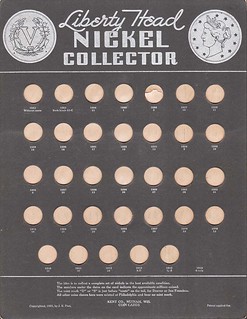
Although many of the boards will be familiar to veteran collectors as among the more commonly seen brands and titles, the collection is particularly rich in "vendor stamped" boards that are highly prized for their historic associations. It was the practice of many retailers to rubber stamp or sticker coin boards with their name and address. Most such vendors were in the Upper Midwest, which was the home turf of the earliest coin boards after this product's invention by Joseph K. Post in 1934. It was these inexpensive and widely distributed coin boards that put coin collecting on the map and made it an "everyman" hobby between 1935 and 1940. When the current coin series became too long to fit on a single-panel board, the more adaptable coin folders began to replace boards starting in 1939.
"I'm still going through these hundreds of pieces to determine which items are new varieties or upgrades to my own collection," Lange observed. "I'm an eager collector of vendor stamps myself, as they have the local appeal that has attracted so many collectors of tokens and national bank notes." The other boards will be placed first with those having want lists with Lange, while the remaining pieces will be included in future price lists. Lange has produced 40 such lists since 2008, and he sends these out along with his quarterly publication Coin Board News, which recently celebrated its 50th issue. In addition, he maintains a website devoted to vintage board collecting: coincollectingboards.com .

The Midwest Collection is the second largest assemblage of coin boards that Lange has acquired in his nearly 40 years of searching for vintage pieces. Still the record holder is the Karl Manthei Collection that Lange purchased in 2006 on the eve of publishing his book, Coin Collecting Boards of the 1930s & 1940s: A Complete History, Catalog & Value Guide, which is available for purchase at his website.
Congratulations on a fantastic purchase! In the future, these acquisitions could come to be seen as legendary among collectors of this material. I created an album in our Flickr image archive - follow the link below for a complete collection of images. -Editor
To view the Midwest Coin Board Collection photo album, see:
Midwest Coin Board Collection
(https://www.flickr.com/photos/coinbooks/albums/72157704951581002)
THE BOOK BAZARRE
HISTORIC COIN BOARDS IN GOLDBERG AUCTION
Lightening does strike twice sometimes - here's a second press release about a smaller coin board hoard coming soon to auction. -Editor


1938 Oberwise Mercury dime board
Nearly two dozen vintage coin boards, all at least 80 years old and most with a dozen or more historic U.S. coins in their respective slots, will be offered in the Pre-Long Beach auction conducted by Goldberg Coins and Collectibles (www.GoldbergCoins.com) in Los Angeles and online, June 2-5, 2019.
The treasure trove of boards was hidden away for decades at the Fullerton Coin and Stamp Company store in Fullerton, California, the oldest coin shop in Orange County. The 23 boards were consigned to the auction by Dwight Manley, noted numismatist, real estate developer and the coin shop’s owner since 2010.
"Starting in the 1930’s, fill-in-the-slots boards helped coin collecting become a popular hobby in the United States. Some of the historic boards in this amazing hoard are in excellent condition and date back to 1938," said Larry Goldberg, co-owner of Goldberg Coins and Collectibles.
"They originally were created for collectors eight decades ago by well-known and not-so-well-known companies: Earl & Koehler; J. Oberwise & Company; and, of course, Whitman Publishing Company," explained Goldberg. "Some of the companies offered to buy back the boards and coins when collectors filled the slots; an attractive incentive during the Great Depression."

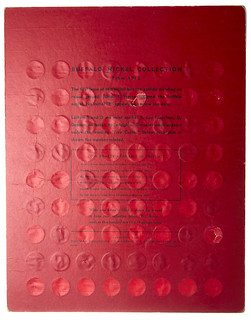
1938 Whitman Buffalo nickels board
Many of the holes on these boards are filled with corresponding coins including Flying Eagle, Indian Head and early to mid-century Lincoln cents as well as Liberty Head and Buffalo/Indian Head nickels, and Barber and Mercury/Winged Liberty dimes.
"When I first saw these boards at the store it was like being a kid again and remembering the pure joy of putting coins into albums," Manley recalled.
As a teenager, Manley worked at Fullerton coin shop and considered the store’s owner, William Pannier, an important mentor. When Pannier died in 2010, Manley purchased the store to keep it open. The shop originally opened in 1961 in downtown Fullerton, and Pannier bought it in 1976.
Interestingly, some of the coin board manufacturers used descriptions different than those commonly used today by numismatists. For example, a 1938 Whitman board for Barber dimes uses the title "LIBERTY HEAD DIME," and another Whitman board for Barber dimes is titled "MORGAN DIME – LIBERTY HEAD."
The individual boards, including the coins in them, have pre-auction estimates ranging from $200 to $750 and up.
"We’ve already had many inquiries about these historic coin boards, and it will be interesting to see how they do in our Pre-Long Beach auction," said Goldberg.
For additional information, contact Goldberg Coins and Collectibles by phone at 310-551-2646, by email at info@GoldbergCoins.com and online at www.GoldbergCoins.com .
Acquiring coin boards with their original coin collection intact is difficult - many of these have had their coins popped out and sold separately years ago. It also makes it difficult to value the boards themselves, since a portion (often the largest portion by far) of the value is represented by the coins. These collection-intact boards are interesting and worthy of study and display. -Editor
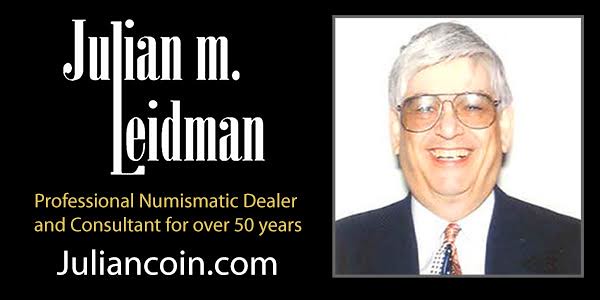
VISITING MONNAIE DE PARIS
Max Hensley submitted this report on his recent visit to the museum of the Monnaie de Paris. Thanks! -Editor
The news that the Monnaie de Paris (Paris Mint) is offering medals to help finance the restoration of Notre Dame Cathedral reminded me that the Mint is another institution that should be on any traveler's list of Paris "must sees". The museum section is extremely professionally curated and will be a joy for any numismatist, scripophily collector, minting technology student and mineralogist.
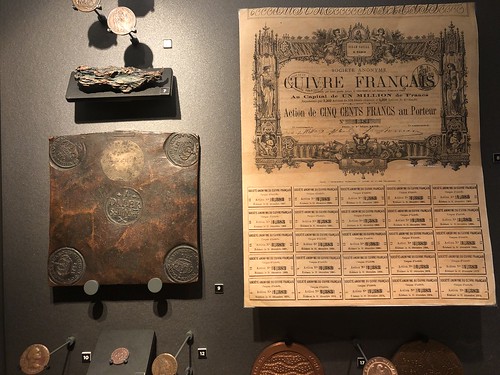
Image 1
Image 1: You may be surprised that there's something there for both stock and bond collectors and geology students. One of the more inspired exhibits are displays directed to each of the coinage metals - gold, silver, zinc, etc., where each showcase includes ingots, coins, ore samples, French mining company stocks and related objects. Shown is the copper exhibit.
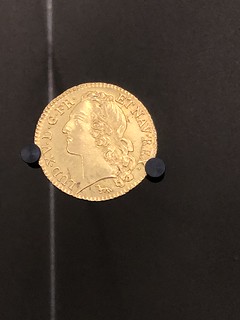

Images 2 and 3
Image 2: For treasure fans, there are a series of exhibits on finds, including the story about the Treasure of Rue Mouffetard - 3,556 Louis XIV French gold coins discovered in the walls of a building in 1938 - and which turn up regularly in auctions today.
Image 3: For history addicts and collectors of Vietnamese material there are selections from the Treasury of Annam taken by the French when they took over the Palace and Citidel of Hue in what became French Indochina in 1885. The display is stylistically quite innovative.

Image 4
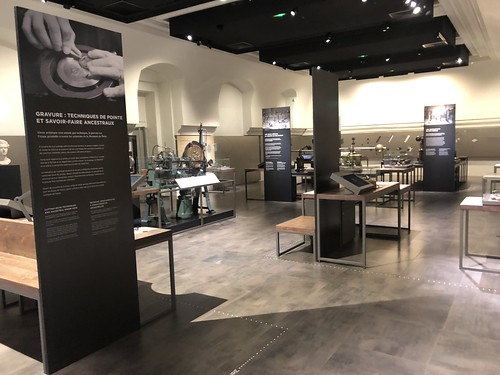
Image 5
Images 4 amd 5: In January there was a special exhibit on engraving, including punches and other technology.
 When planning your visit to France you must not miss this place. The pictured entrance on 2, Rue Guenegaud was the easiest to find, a side street off Quai de Conti. Hours are 11-7, Wednesday to 9, closed Monday. 14 Euro fee. The mint shop has modern material (and the Notre Dame medals) for sale.
When planning your visit to France you must not miss this place. The pictured entrance on 2, Rue Guenegaud was the easiest to find, a side street off Quai de Conti. Hours are 11-7, Wednesday to 9, closed Monday. 14 Euro fee. The mint shop has modern material (and the Notre Dame medals) for sale.
The address is for the mint MUSEUM. I never saw anything like the US mints' production rooms. They may be there somewhere but I had not time to root them out.
For more information, see:
https://www.monnaiedeparis.fr/

NUMISMAGRAM MEDAL SELECTIONS: MAY 2019
Jeremy Bostwick at Numismagram forwarded these four medals from his recent addition of new material to his website. In addition to the pieces below, you will find a focus this month on the popular Wiener architectural series, the nude in medallic art, and silver medals with a WWI-theme. Visit numismagram.com/inventory for all of the new items. -Editor
Aristide Blank Bronze Medal

100632 | ROMANIA & FRANCE. Compagnie franco-roumaine de navigation aérienne bronze Medal. Issued circa 1923. Commemorating the founding of the French-Romanian airline by Aristide Blank (72mm, 153.83 g, 12). By H. Nocq. QUÆ SUNT QUÆ FUERINT QUÆ MOX VENTURA TRAHANTUR... (what is, what was, and what shall be...–adapted from the Georgics by Virgil), transportation scene: countryside setting featuring stagecoach driven left, locomotive emerging from right, biplane flying overhead to left, and antique racing car left to lower right / COMPAGNIE FRANCO ROUMAINE DE NAVIGATION AERIENNE / PARIS PRAGUE VARSOVIE VIENNE BUDAPEST BELGRADE BUCAREST CONSTANTINOPLE, two biplanes flying over outline of southeastern Europe, with the airline's routes highlighted; in two lines in exergue, FONDEE en AVRIL 1920 / PAR ARISTIDE BLANK. Edge: CUIVRE. Dogan 6801. Choice Mint State. Splendid light brown-olive surfaces. A very rare and interesting piece of aviation history and judaica, featuring the 'transportation trinity' of planes, trains, and automobiles. $645.
Born in Bucure?ti (Bucharest) to a wealthy Jewish-Romanian family in 1883/4, Aristide Blank followed his father into the world of finances, directing his family's bank, Banca Marmorosch, Blank & Co., as well as patronizing the arts and other humanistic causes. He founded the CFRNA (Compagnie franco-roumaine de navigation aérienne)—the subject of this medal—sponsored a Romanian edition of the Bible, and founded the Cultura Na?ionala (National Culture) publishing house, writing numerous social and economic analyses. A supporter of Jewish causes, he himself was the victim of an anti-semitic attack in Bucharest in 1924 while giving a lecture to a group of Romanian bankers. By 1950, persecuted by the communists under Gheorghe Gheorghiu-Dej, Blank found himself financially ruined, ultimately fleeing to Paris.
Great medal! -Editor
To read the complete article, see:
100632 | ROMANIA & FRANCE. Aristide Blank bronze Medal
(https://www.numismagram.com/product-page/100632)
Bremen Silver Medal

100633 | GERMANY. Bremen silver Medal. Issued 1917. Commemorating the need for the shipping industry (35mm, 14.15 g, 12h). By an uncertain designer. NAVIGARE NECESSE EST—VIVERE NON EST NECESSE ("seafaring is living, nothing else comes close") / 1 IVLI 1917, ornate key (civic coat-of-arms) over star-filled field / Façade of the Roselius-Haus; R" - Co / grad - dör across field. Edge: Beaded. Gem Mint State. Highly lustrous and reflective, with an attractive mélange of cobalt and crimson tone around the devices. $245.
Featured on the reverse of this medal, the Museum im Roselius-Haus (Ludwig Roselius Museum) is a historic edifice in Bremen's old town, having been completed in 1588. In 1902, Ludwig Roselius, a German coffee merchant, purchased the home, utilizing it as a museum for various artifacts and objets d'art from the middle ages to the Baroque period.
To read the complete item description, see:
100633 | GERMANY. Bremen silver Medal.
(https://www.numismagram.com/product-page/100633)
Dresden Uniface Bronze Plaque

100634 | GERMANY. Dresden uniface bronze Plaque. Issued 1911. Commemorating the International Health Exposition, held in Dresden from May–October 1911 (66x113mm). By P. Pöppelmann at the Glaser & Sohn Workshop in Dresden. KEIN REICHTUM / GLEICHT DIR O / GESUNDHEIT ("no wealth equals you, o health"), nude male standing facing, head right, with hand on hip; tree in background to left; to right, nude female seated left on base, head facing, suckling an infant held in arms; in three lines in exergue, INTERNATIONALE / HYGIENE–AUSSTELLUNG / DRESDEN 1911. Edge: Plain. Brettauer –; Storer 4800b. Gem Mint State. Attractive yellow-bronze surfaces, with a charming matte nature; exquisite relief. Includes original box of issue (though one edge is slightly split). $325.
Organized by Karl August Lingner, a German philanthropist and businessman, the International Health Exposition in 1911 was an expansion upon a similar, more local event which Lingner had overseen in 1903. Meant to inform and educate the public about advancements in health, the expo prominently featured visual representations of the human body, whereby transparent organs were displayed for the first time—anatomist Werner Spalteholz having derived a means of 'drenching' human tissue with liquids which possessed similar light refracting properties, thus allowing one to see within both skin and tissue.
To read the complete item description, see:
100634 | GERMANY. Dresden uniface bronze Plaque.
(https://www.numismagram.com/product-page/100634)
Adam & Eve Bronze Medal

100628 | FINLAND & SWEDEN. Adam & Eve bronze Medal. Issued 1987. Adam & Eve and the fall of Man (59mm, 166.13 g, 12h). By K. Räsänen and produced by Sporrong AB in Solna. ADAM, Adam reclining left, head facing; behind to left, Eye of God from which dove emerges / EVA, Eve reclining right, head facing, raising hand in protest and with serpent coiled around arm; crescent moon behind to inner left, Tree of Knowledge behind to outer right. Edge: SPORRONG. HK 132. Gem Mint State. Deep brown surfaces, with some lighter hints of antiquing on the high points. Very rare, with a mintage of just 50 pieces. $565.
Kauko Räsänen was born just inside what is now modern-day Russia in 1926, becoming a magnificent sculptor and creator of medallic art until his recent death in 2015 at the age of 89. His sculptures feature a distinctive modern flare which can be seen, often in extravagant ways, in his works of medallic art as well. Räsänen would utilize bizarre shapes and even additional pieces to convey his entire medallic concept, often leaving the viewer with the idea that the medals were miniature sculptures in their own right. The piece above exemplifies his ultra-modern approach, with highly stylized artistry, intense relief, and a somewhat mirrored approach, whereby the aspects of the obverse mimic those of the reverse in numerous ways, while still maintaining their own story.
An oddly stylized piece, yet attractive nonetheless. Unusual and interesting piece. -Editor
To read the complete item description, see:
100628 | FINLAND & SWEDEN. Adam & Eve bronze Medal.
(https://www.numismagram.com/product-page/100628)

SELECTIONS FROM GRINOLDS EBAY SALES
Here are some eBay lots from dealer Dick Grinolds that caught my eye this week. -Editor
1858 Atlantic Telegraph Medal by George Lovett


Atlantic Telegraph Successfully Laid, 5th Of August, 1858 // (John Bull & Brother Jonathan). Miller NY495, white metal, 31mm, xf detail but oxidation, by George H. Lovett.
The Atlantic telegraph cable was the Internet of the day - a hugely important event. Love the shooting lightning bolts. -Editor
To read the complete lot description, see:
Atlantic Telegraph Successfully Laid 1858 Miller NY 495 George Lovett f.
(https://www.ebay.com/itm/Atlantic-Telegraph-Successfully-Laid-1858-Miller-NY-495-George-Lovett-f/392288119830)
1861 Washington Oath Of Allegiance Medal
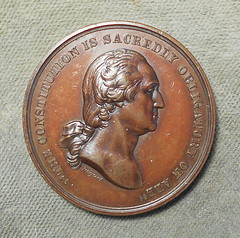

"The Constitution Is Sacredly Obligatory On All" (George Washington Right) // U.S. Mint, Oath Of Allegiance Taken By The Officers And Workmen Sep. 2, 1861, Jas. Pollock, Dir. (Wreath Around). U.S. Mint Medal, Julian CM-2, Musante GW-476, Baker-279B, mahogany bronze, 31mm, signed Paquet.
A great Washington medal, and very interesting U.S. Mint artifact. -Editor
To read the complete lot description, see:
George Washington: Julian CM-2 Oath Of Allegiance 1861 Mahogany Bronze GW-476
(https://www.ebay.com/itm/George-Washington-Julian-CM-2-Oath-Of-Allegiance-1861-Mahogany-Bronze-GW-476/392289674505)
1865 Cornelius Vanderbilt Mint Medal


Cornelius Vanderbilt, A Grateful Country To Her Generous Son (Bust Right) // (America With Sword & Shield). U.S. Mint List No. 523, yellow bronze, 3" diameter, typical toned au, by S. Ellis.
Great medal. Vanderbilt's ships made him one of the wealthiest men in the world. During the Civil War he donated his largest and fastest steamship to the Union Navy. -Editor
To read the complete lot description, see:
Cornelius Vanderbilt, A Grateful Country To Her Generous Son 3" US Mint List 523
(https://www.ebay.com/itm/Cornelius-Vanderbilt-A-Grateful-Country-To-Her-Generous-Son-3-US-Mint-List-523/392288944587)
1901 McKinley's Death Train Counterstamp


McKINLEY’S DEATH TRAIN 1901 counterstamped in individual letters on a flattened 1c coin. Coins were put on the railroad tracks and run over by the funeral train transporting President McKinley back to Ohio for burial. Then they were counterstamped as personal keepsakes or offered for sale.
Neat item, but it doesn't look like a rolled cent to me. wouldn't it be more oval-shaped? And wouldn't you be able to see at least some of the original design? If it's not made from a cent, what was it made from? -Editor
Dick writes:
You are most probably correct on it not being on an Indian cent (In haste I simply forgot to differentiate this piece in the description) but few that I've seen came out like an elongated cent, most were oddly shaped. I am satisfied of the age & pedigree on this one.
It looks original to me, too, it's just less clear what the host "coin" is. Interesting piece. -Editor
To read the complete lot description, see:
Counterstamp: McKINLEY’S DEATH TRAIN 1901 c/s Individual Letters On Rolled 1c
(https://www.ebay.com/itm/Counterstamp-McKINLEY-S-DEATH-TRAIN-1901-c-s-Individual-Letters-On-Rolled-1c/392286494243)
1932 Jean Harlow Medal By Adam Pietz

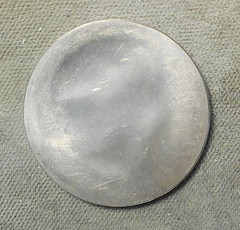
Jean Harlow (Bust Left, Small Tragedy – Comedy Masks) // (Blank). Copper nickel, uniface, 28mm, very nice uncirculated, signed 19©32 Adam Pietz Sculptor.
This medal is part of a small collection of works by Adam Pietz that I will be offering over the next several weeks.
Adam Pietz (1873-1961) was a sculptor, medalist engraver, and etcher. He was born in Offenbach, Germany, and moved to the U.S. in 1889 where he studied at the Chicago Art Institute (1892-1893), Drexel Institute (1894-1898), and the Pennsylvania Academy of the Fine Arts (1899-1903). He was the assistant chief engraver at the U.S. Mint in Philadelphia from 1927 to 1946. He is best known in numismatics for designing the Iowa Centennial commemorative half dollar and numerous commemorative medals found on the Mint List. Reportedly some of his private works and personal medals were struck at the Philadelphia Mint
Nice work. -Editor
To read the complete lot description, see:
Adam Pietz f.: Jean Harlow Uniface 28mm Copper Nickel 1932 Sharp
(https://www.ebay.com/itm/Adam-Pietz-f-Jean-Harlow-Uniface-28mm-Copper-Nickel-1932-Sharp/223498150295)
To view all of Dick's eBay offerings, see:
https://www.ebay.com/sch/i.html?_nkw=&_in_kw=1&_ex_kw=&_sacat=0,
&_udlo=&_udhi=&_ftrt=901&_ftrv=1&_sabdlo=&_sabdhi=&_samilow=
&_samihi=&_sadis=15&_stpos=20147-4876&_sargn=-1%26saslc%3D1
&_salic=1&_fss=1&_fsradio=%26LH_SpecificSeller%3D1&_saslop=1
&_sasl=celluloid&_sop=12&_dmd=1&_ipg=200&_fosrp=1

NUMISMATIC NUGGETS: MAY 5, 2019
Here's a selection of interesting or unusual items I came across in the marketplace this week. Tell us what you think of some of these. -Editor
Tauric Chersonesos, Pantikapaion
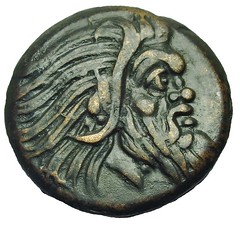

Tauric Chersonesos, Pantikapaion. AE 20, 310-303 BC.
Obverse: Bearded head of Pan right.
Reverse: P-A-N, forepart of griffin left; below, sturgeon left.
Ref: SNG BM Black Sea 869-871
Weight: 7.89g
Good metal and detail.
Nice Greek coin. Wild obverse face and hairdo. And what's not to like about a griffin? -Editor
To read the complete lot description, see:
Greece (ancient) - Tauric Chersonesos, Pantikapaion. AE 20, 310-303 BC.
(https://auction.catawiki.com/kavels/26477547-greece-ancient-tauric-chersonesos-pantikapaion-ae-20-310-303-bc)
East India Company Bombay Presidency Mohur

India. East India Company. Bombay Presidency. Mohur, nd, frozen year 4(6). Surat, struck 1800-1832. In the name of Shah `Alam II Badshah. Persian couplet, julus formula on reverse. KM 214. NGC XF Details - shroff marked edge. Good Extremely Fine, minor shroffs on edge (shroffs on the edge of Indian coins, unless they are messy, do not demote a grade to Details). Ex Sidney W. Harl and Kenneth W. Harl Collection.
From the SPINK US & World Coins e-Auction: 7th - 17th May 2019 -Editor
To read the complete lot description, see:
INDIA. EAST INDIA COMPANY. BOMBAY PRESIDENCY. MOHUR, ND, FROZEN YEAR 4(6). SURAT, STRUCK 1800-1...
(https://live.spink.com/lots/view/4-1IE6T/india-east-india-company-bombay-presidency-mohur-nd-frozen-year-46-surat-struck-1800-1)
Bangor Maine Torrey Beehive Token


Civil War token Fuld ME100A-2a R3 PCGS MS64 BN sharp and nicely toned. R. S. Torrey Inventor Of The Maine State Bee Hive 1864 Bangor ME Union with eagle on shield. The only merchant that issued Civil War tokens from Maine. We sold a NGC MS64 on eBay in September 2017 that brought $513.98. From the Q. David Bowers collection, in a special PCGS holders with Dave Bowers picture and facsimile signature
From dealer Steve Hayden's eBay listings. -Editor
To read the complete lot description, see:
Bangor Maine Torrey Beehive Civil War Token PCGS MS64 Ex Bowers
(https://www.ebay.com/itm/Bangor-Maine-Torrey-Beehive-Civil-War-Token-PCGS-MS64-Ex-Bowers/382921914373)
1875 King Ventriloquist Token

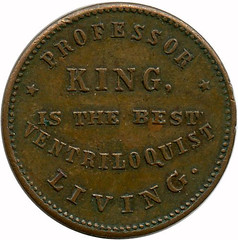
You are bidding on a neat old KING / THE / GREAT / PRESTIDIGITATEUR / AND MODERN / SAMPSON PROFESSOR / KING / IS THE BEST / VENTRILOQUIST / LIVING magician token. The token is made of copper and measures 19mm in diameter.
What could be more cool than a ventriloquist token? -Editor
To read the complete lot description, see:
1875 United States Professor King Ventriloquist Modern Samson Magician Token
(https://www.ebay.com/itm/1875-United-States-Professor-King-Ventriloquist-Modern-Samson-Magician-Token/264061674694)

WOODBRIDGE COUNTERFEIT DEEMED TREASURE
Arthur Shippee forwarded this BBC News item from late March about a weird contemporary counterfeit 7th century gold coin. Thanks. -Editor
 A "blundered" counterfeit of a 7th Century coin described as rare by experts has been declared treasure.
A "blundered" counterfeit of a 7th Century coin described as rare by experts has been declared treasure.
Suffolk coroner Nigel Parsley was told the coin was an unofficial copy of a gold Merovingian tremissis, originally minted in Dorestad between 630 and 650.
It was heard the legends on both sides of coin, found near Woodbridge, were spelt wrongly.
Archaeological officer Faye Minter said Anglo-Saxon coins were valuable and "rare, counterfeit or not".
She said it was thought the coin was used for jewellery, as it had been pierced and there was a "general lack of wear".
Miss Minter told the hearing in Ipswich the legends on both side were "blundered" to a degree which was "unusual in official issues of this coinage".
She said it was about 0.3g lighter than usual and was thought to be made in the decades after 650.
Great numismatic name - Miss Minter! -Editor
To read the complete article, see:
Treasure: 'Blundered' fake gold coin found near Woodbridge
(https://www.bbc.com/news/uk-england-suffolk-47679789)
SS NEW YORK COINS DISPLAYED IN LOUISIANA
The monster gold bar and coin recovery from the wreck of the SS Central America gets most of the headlines, but coins were recovered from the SS New York as well. A group of coins and other artifacts recovered from that wreck are on view at the Bayou Teche Museum in New Iberia, Louisiana. For more information on the ship and its coins, see Dave Bowers' book (as noted in the 2009 E-Sylum articles linked below). -Editor
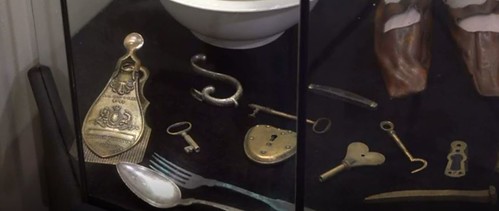
Gary Hebert and a few diving buddies began searching for the ship’s wreckage in the early 1990s. They were looking for the SS New York because they knew it was carrying a large amount of gold and silver coins. They found the wreckage of a steamship buried in the murky bottom of the gulf in 60 feet of water, 40 miles south of the Louisiana-Texas state line.
The divers were pretty sure they had found the right wreckage. But it wasn’t until they located the ship’s bell that they knew for sure they had found treasure.
"From there and kept going and started finding coins. A few coins here. A few coins there. And then as we dug deeper more and more coins and at that point it got really exciting," says Hebert.
"He came up and he showed me what he found and it was a gold coin. I went, ‘Oh, Okay.’ So it did really get exciting when you’re finding coins like you’re at an Easter Egg Hunt," says Renee.
Some of the ship’s artifacts are now on display at the Bayou Teche Museum in New Iberia.

The divers filed a claim in federal court and now own the shipwreck. So far, they have recovered more than 500 gold coins, including some minted in New Orleans. And several thousand silver coins. Most have been sold at auction.
"Coins from 12 different countries, a lot of European countries, a lot of South American countries. Mexico. But the main portion was U.S. gold and silver coins which were the most valuable ones," says Gary. "It’s great when your hobby turns into something that pays for itself, you know."
And they are sharing some of the historical treasures in the New Iberia Museum that tells the story of a routine journey of a steamship headed for New Orleans that turned tragic in a Gulf of Mexico hurricane.
 To read the complete article, see:
To read the complete article, see:
Heart of Louisiana: The SS New York
(https://www.fox8live.com/2019/05/01/heart-louisiana-ss-new-york/)
To read the earlier E-Sylum articles, see:
NEW BOOK: TREASURE SHIP S.S. NEW YORK BY DAVE BOWERS
(https://www.coinbooks.org/esylum_v12n02a04.html)
BOOK REVIEW: THE TREASURE SHIP S.S. NEW-YORK BY Q. DAVID BOWERS
(https://www.coinbooks.org/esylum_v12n03a04.html)

REPRIEVE FOR BRITAIN'S 1P AND 2P COINS
David Sundman forwarded this Sunday Times article with the latest on the fate of Britain's 1p and 2p coins. Thanks. -Editor
 The chancellor is pledging to keep 1p and 2p coins in circulation, a year after calling them "obsolete" and suggesting that they should be scrapped.
The chancellor is pledging to keep 1p and 2p coins in circulation, a year after calling them "obsolete" and suggesting that they should be scrapped.
Philip Hammond will say in a speech today that there are "no plans to alter the make-up of coins or notes" and that cash denominations will continue in their present form when he announces the launch of a task force "to safeguard the future of cash and ensure its availability for years to come".
While acknowledging that technology has "transformed banking for millions of people", Mr Hammond will emphasise that it is "also clear that many people still rely on cash". He wants the "public to have choice over how they spend their money".
Economists at the Bank of England weighed in, arguing that removing coppers from circulation would not cause inflation, as is often claimed. Scrapping the two smallest denominations would lead to retailers rounding up prices, they admitted, but there would be no serious impact on cost.
To read the complete article (subscription required), see:
Coin flip: Hammond changes his mind on scrapping the penny
(https://www.thetimes.co.uk/article/coin-flip-hammond-changes-his-mind-on-scrapping-the-penny-q5mzhc7fl)
David Pickup forwarded this article from the Daily Mail. Thank you. -Editor
Plans to ensure that Britons will be able to carry on ‘spending a penny’ will be unveiled this week.
Chancellor Philip Hammond is set to confirm that a controversial proposal to abolish 1p and 2p coins has now been ditched.
The about-turn comes more than a year after Mr Hammond described the coins as ‘obsolete’.
The plan sparked protests, with the Chancellor labelled a ‘penny-pincher’ and Downing Street distanced itself from the idea.
David adds:
The most surprising part of the reports is the statement that most copper coins are used used only once and put in jars or thrown away. I would not think any coins are thrown away!
To read the complete article, see:
https://www.dailymail.co.uk/news/article-6967307/Chancellor-Philip-Hammond-decides-save-1p-2p-coins-U-turn.html
(https://www.dailymail.co.uk/news/article-6967307/Chancellor-Philip-Hammond-decides-save-1p-2p-coins-U-turn.html)
To read the earlier E-Sylum article, see:
FATE OF BRITAIN'S 1P AND 2P COINS UNCLEAR
(https://www.coinbooks.org/v22/esylum_v22n17a24.html)
CANADA'S VIOLA DESMOND BANKNOTE OF THE YEAR
Arthur Shippee and Dick Hanscom forwarded this BBC News article about Canada's Viola Desmond note winning the Banknote of the Year competition. Thanks. -Editor
A Canadian $10 bill has won the top prize in an international banknote competition.
The bill, featuring Canadian civil rights activist Viola Desmond, beat 15 other banknotes to win the International Bank Note Society award.
The Bank of Canada won the award over new currency issued by Switzerland, Norway, Russia and the Solomon Islands.
The new vertical format bill dominated the voting at the awards, said the International Bank Note Society in a release.

Russia, Canadian and Venezuelan banknote nominees
"Incorporating the latest in technological standards, the bold security features are easy to check and difficult to counterfeit," the release said.
The organisation considers the artistic merit, design, use of colour, contrast, balance and security features of each nominated bank note.
There were 150 new bank notes released worldwide last year, though only 10% "were of sufficiently new design" to be nominated for the award.
To read the complete article, see:
Canada's Viola Desmond note wins international banknote competition
(https://www.bbc.com/news/world-us-canada-48071926)
This article from Quartz focuses on the note's vertical nature. -Editor
 Canada’s $10 bill has had a bit of a face-lift. The iridescent purple note, issued in November of last year, is the only one so far to feature either a person of color or a non-royal woman. What’s more, it’s vertical.
Canada’s $10 bill has had a bit of a face-lift. The iridescent purple note, issued in November of last year, is the only one so far to feature either a person of color or a non-royal woman. What’s more, it’s vertical.
If the note looks a little unusual to you, you’re not alone. Its orientation is relatively uncommon among banknotes, though the format has been used before in countries including Bermuda, Switzerland, Colombia, and Venezuela.
Whether or not that’s true, the Bank of Canada’s decision was not based on any particular technical reason, a spokesperson told Quartz. Instead, she said, the change is "essentially because it’s a good way to really put forward and frame the portrait of Viola Desmond...
In addition to making her picture stand out, the vertical orientation was "a good way to distinguish it" from earlier notes, the bank spokesperson said. With each new set of banknotes, "we try to innovate."
To read the complete article, see:
Behind the vertical design of Canada’s award-winning $10 bill
(https://qz.com/1610724/why-canadas-new-award-winning-10-bill-is-vertical/)
LOOSE CHANGE: MAY 5, 2019
Here are some additional items I came across in the media this week that may be of interest. -Editor
Hallenbeck Coin Gallery Robbed
I'm very glad to hear no one was hurt in an armed robbery this week at the coin store of Ken and Tom Hallenbeck in Colorado Springs, CO. Thanks to Lee and Dave Bowers for passing this along. -Editor

A person armed with a pistol robbed a Colorado Springs coin store.
The robbery happened just before 3 p.m. on Friday at Hallenbeck Coin Gallery downtown. The store is off North Nevada Avenue just north of Willamette.
Police say officers flooded the area in an attempt to locate the male robber who fled on foot. Officers add the robbery was quick and no one was hurt. A K-9 unit was brought to the scene but the criminal remains at large.
To read the complete article, see:
Armed robbery at downtown Colorado Springs coin store
(https://www.kktv.com/content/news/Armed-robbery-at-downtown-Colorado-Springs-coin-store-509456461.html)
JEOPARDY! CHAMP'S SECRET: CHILDREN'S BOOKS
E-Sylum readers love books and learning facts in general. This Washington Post article published May 2, 2019 reveals where Jeopardy! Champ James Holzhauer learned a useful numismatic fact. -Editor

We asked Holzhauer about the importance of kids books in his prep, and which ones have proved most useful:
How are kids’ books more helpful than adult books in preparing for the show?
You may be able to read an adult book about a boring subject without falling asleep, but I can’t. For me, it was either read some children’s books — designed to engage the reader — or go into "Jeopardy!" with giant gaps in my knowledge base.
Which children’s books are you most grateful that you’ve read? Can you give us a list of a handful that turned out to be most useful?
The Classics Illustrated series was an excellent primer in literature, and I also really enjoyed Zachary Hamby’s mythology books for teens.
Can you tell us about a game-vital fact or two that you learned from a kids’ book that you wouldn’t have otherwise known?
I had a Daily Double about the Denver Mint, which came from some Americana book that I can’t remember the name of.
To read the complete article, see:
The children’s books that turned James Holzhauer into a ‘Jeopardy!’ champ
(https://www.washingtonpost.com/entertainment/books/the-childrens-books-that-turned-james-holzhauer-into-a-jeopardy-champ/2019/05/02/e0835e5e-6cd2-11e9-8f44-e8d8bb1df986_story.html)
FEATURED WEB SITE: FAIRFAX COIN CLUB
This week's Featured Web Site is the Fairfax Coin Club, a relatively new group of nearly 100 members meeting monthly in Vienna, VA.

http://fairfaxcoinclub.com/


